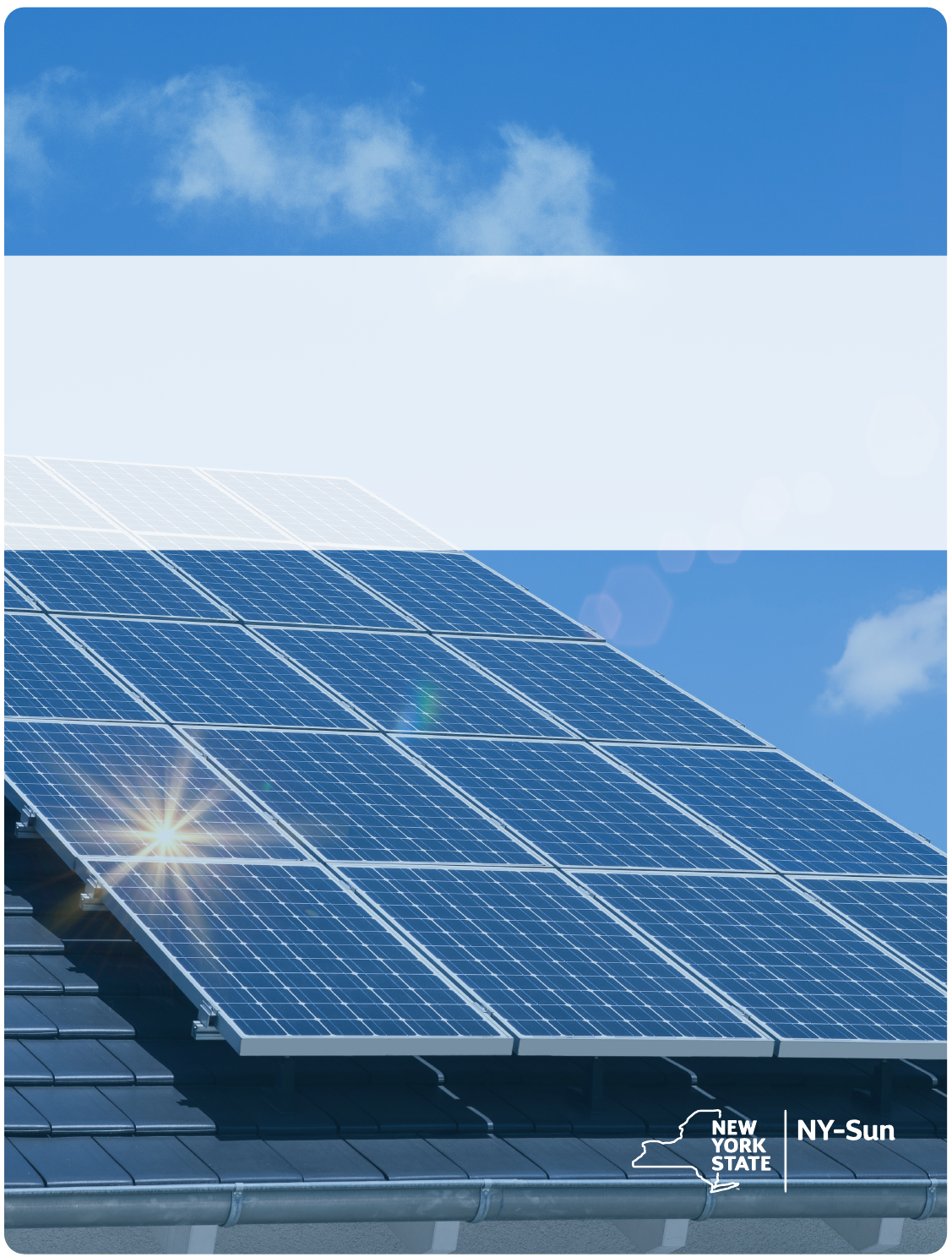
NY-Sun
Upstate + Long Island
Program Manual
April 2024 — Version 18
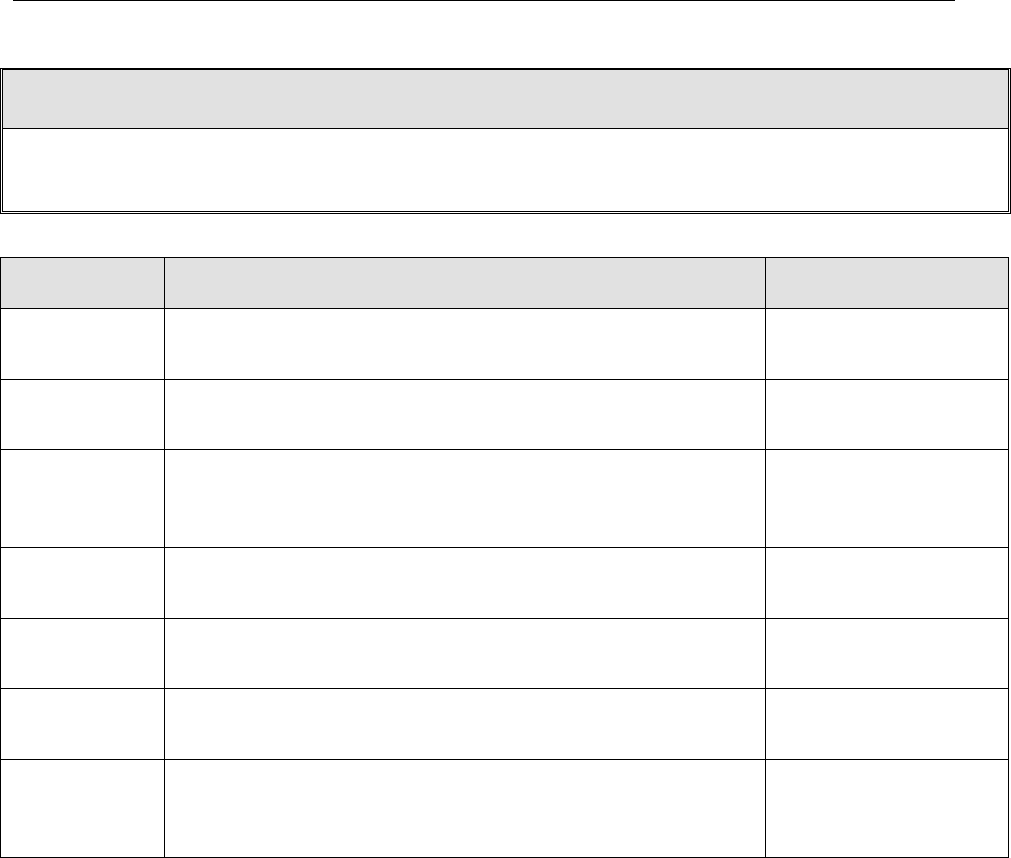
1
NYSERDA Record of Revision
Document Title
NY-Sun Upstate + Long Island Program Manual
April 2024
Revision Date Description of Changes Revision on Page(s)
April 2024 Projects receiving the Multifamily Affordable Housing Incentive that
are metered as CDG must use ICSA eligibility requirements.
17
April 2024 Clarification that certain requirements for door-to-door sales for ICSA
Round 2 apply to customers subscribed on or after November 1, 2023.
33
April 2024 In the event a contractor is in arrears on GJGNY program funds,
NYSERDA may exercise its right to set-off NY-Sun incentive payments
to cover amounts owed by the contractor.
36
April 2024 Payee and Full Assignment changes. Payee’s will now only be identified
prior to invoicing with a payee assignment request.
37-39
April 2024 Additional detail on application requirements for customer contact
information and use of E-signature.
42,45
April 2024 Clarification that CESIR Milestones must be complete for extension
requests.
53
April 2024 Adjustment to the Milestone Deliverable Submission requirements for
the ICSA. Contractors may now submit allocation documentation for
one of the project’s first three months in operation.
58-59
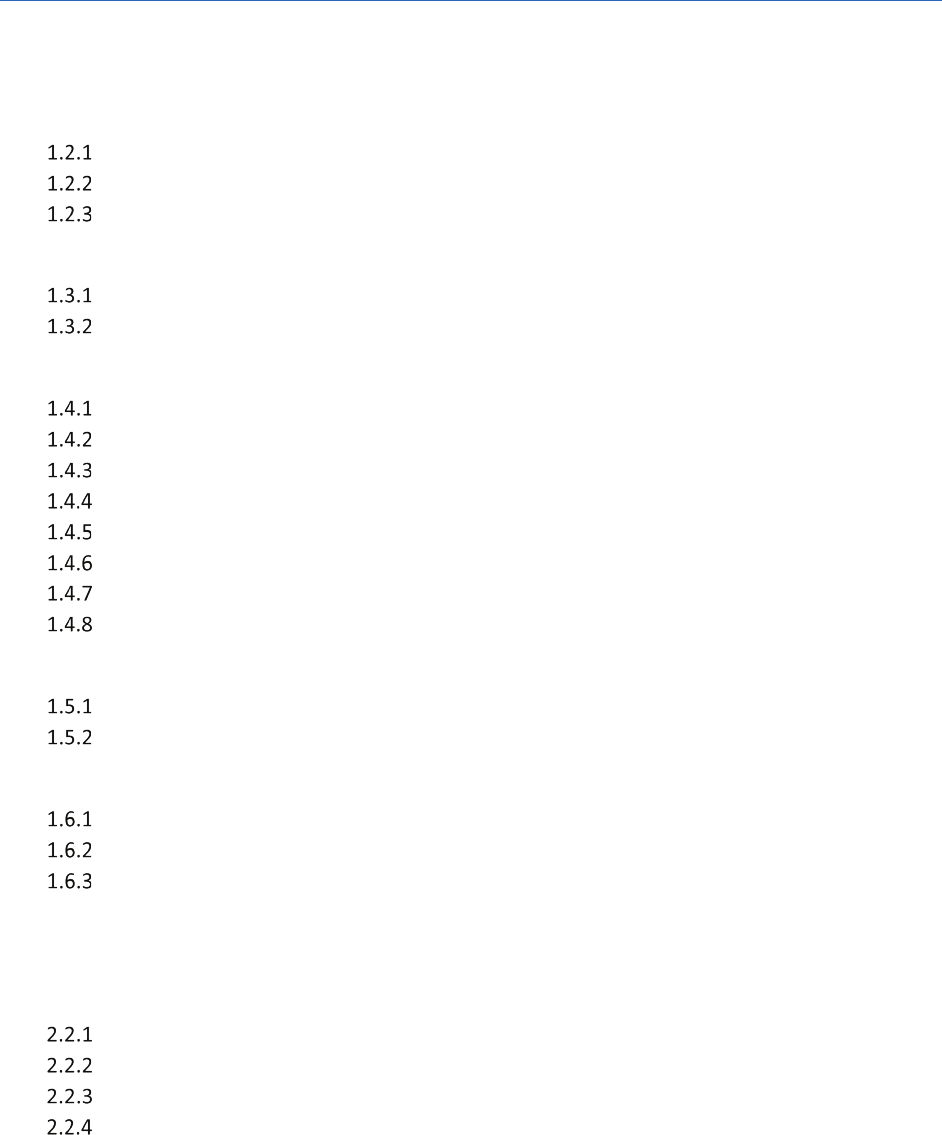
2
Table of Contents
1 Program Basics ...........................................................................................................................5
1
.1 NY-Sun Incentive Program Summary ............................................................................................ 5
1.2 Program Participation ................................................................................................................... 6
Qualifications ........................................................................................................................ 6
Contractor Qualifications, Roles, and Responsibilities ......................................................... 7
Bu
ilder Qualifications, Roles, and Responsibilities ............................................................... 8
1.3 Contractor and Builder Resources .............................................................................................. 10
S
olar Announcements ......................................................................................................... 10
Ta
x Credits ........................................................................................................................... 10
1.4 Incentive Structure ...................................................................................................................... 10
M
egawatt Block Program.................................................................................................... 10
P
revailing Wage Adder; Requirements for Prevailing Wage or Project Labor Agreement 11
I
ncentive Transitions ........................................................................................................... 14
S
ystem Size Cap ................................................................................................................... 14
P
roject and Application Modifications ................................................................................ 15
E
xpansion of Completed Systems ....................................................................................... 15
R
eplacement of Completed Systems .................................................................................. 15
I
ncentive Adders ................................................................................................................. 15
1.5 Green Jobs-Green NY Financing .................................................................................................. 36
R
esidential Customers ........................................................................................................ 36
N
onresidential and Not-for-Profit Customers .................................................................... 36
1.6 Assignments ................................................................................................................................ 37
R
esidential Projects ............................................................................................................. 37
N
onresidential Projects ....................................................................................................... 37
C
ommercial/Industrial Projects .......................................................................................... 38
2 Applying for Incentives ............................................................................................................. 40
2.1
Unsubmitted Status
..................................................................................................................... 40
2.2
Submitted Status
.......................................................................................................................... 40
D
ocument Details ................................................................................................................ 41
R
equired Documents That Must Be Submitted with Each Application .............................. 42
R
equired for Residential and Nonresidential Projects ........................................................ 43
R
equired for Nonresidential and Commercial/Industrial Projects ..................................... 45

3
Required Documents If Accessing Affordable Solar Residential Incentive ......................... 48
Required Documents If Using Multifamily Affordable Housing Incentive ..........................
48
Required Documents If Using Brownfield/Landfill Incentive ..............................................
48
Required Documents If Using Floating Solar Incentive .......................................................
48
Required Documents If Using Solar Plus Energy Storage Incentive ....................................
48
Documents Not Required with Application: Must be Available Upon Request ................. 49
2.3
Received Status
............................................................................................................................ 52
Technical Review .................................................................................................................
52
2.4
Pending Approval Status
.............................................................................................................. 52
2.5
Approved Status
.......................................................................................................................... 52
Project Timelines .................................................................................................................
53
Actions in Approved Status ................................................................................................
. 53
2.6
Completed Status
........................................................................................................................ 64
Anniversary Payments – C
ommercial/Industrial ................................................................ 64
Performance Payment Recoupment due to Non-E
mergency Disconnection for Utility
Work ............................................................................................................................................. 65
3 Sys
tem Technical Requirements ................................................................................................ 66
3.1 Solar Modules ............................................................................................................................. 66
3.2 Inverters ...................................................................................................................................... 66
3.3 Solar Production Metering and Data Acquisition – Commercial/Industrial ............................... 66
3.4 Solar Production Monitoring Equipment – Residential and Nonresidential .............................. 67
3.5 System Losses – Residential and Nonresidential ........................................................................ 67
3.6 Grid Connection .......................................................................................................................... 68
3.7 Approved System Design ............................................................................................................ 68
3.8 Interconnection ........................................................................................................................... 68
3.9 Other Electrical Components ...................................................................................................... 68
3.10 Structural Requirements ............................................................................................................. 68
3.11 Compliance with Laws and Codes ............................................................................................... 69
3.12 System Warranty for Purchase Agreements ............................................................................... 69
3.13 Production Warranty for PPA/Leases ......................................................................................... 69
3.14 Energy Storage Systems .............................................................................................................. 70
Equipment Eligibility for Solar Plus Energy Storage Projects ..............................................
70
Monitoring Requirements for Solar Plus Energy Storage Projects .....................................
71
4 Quality Assurance and Compliance ........................................................................................... 72
4.1 Inspection of Completed Projects ............................................................................................... 72
4.2 Participation Status ..................................................................................................................... 72

4
Provisional Status ................................................................................................................ 72
Full Status ............................................................................................................................ 73
P
robation Status .................................................................................................................. 73
S
uspended Status ................................................................................................................ 74
Ter
minated Status ............................................................................................................... 75
I
nactive Status ..................................................................................................................... 76
S
tatus Review Process ......................................................................................................... 76

5
1 Program Basics
1.1 NY-Sun Incentive Program Summary
The New York State Energy Research and Development Authority (NYSERDA) provides financial
incentives and financing options through the NY-Sun Incentive Program for the installation of new
grid-connected solar photovoltaic (solar electric) systems or residential solar photovoltaic systems on
Long Island that pair with an electrical energy storage system (storage system) that offset the use of
grid-supplied electricity.
Funding for the program has been allocated by the New York State Public Service Commission through
the Clean Energy Fund (CEF) and an alternate surcharge mechanism, with additional funding made
available through the Regional Greenhouse Gas Initiative (RGGI). Incentives are granted on a first-come,
first-served basis, and applications will be accepted through December 31, 2030, or until funds are fully
committed, whichever is earlier.
The program is divided into the following regions and sectors (all capacity measurements used in this
document are Direct Current (DC) ratings unless noted otherwise):
The region served by Con Edison (Con Ed)
• Residential up to 25kW
• Nonresidential up to 7.5MW, divided into three size categories:
o Nonresidential under 200kW
o Nonresidential greater than 200kW, up to 1MW
o Nonresidential greater than 1MW
The balance of the State (Upstate)
• Residential up to 25kW
• Nonresidential up to 750kW
• Commercial/Industrial 750kW to 7.5MW
Incentives for Long Island Power Authority (LIPA) and New York Power Authority (NYPA) customers
are made available through RGGI funding and are subject to separate funding limits. For the Long Island
region (served by PSEG Long Island as the LIPA System Operator), NY-Sun incentives have been fully
allocated as of February 2019, with the exception of the Affordable Solar Residential Incentive, the
Multifamily Affordable Housing Incentive, and the Solar Plus Energy Storage Incentive. Incentive
structure and rates for NYPA customers or customers with a municipal power supplier will be the same
as those for non-NYPA customers in the same program region and sector.
Community Distributed Generation (CDG) projects are eligible for nonresidential and
commercial/industrial incentives and subject to all program rules and any rules adopted by the Public
Service Commission. A CDG project sponsor is considered a program customer.

6
This program manual contains the terms and conditions applicable to residential, nonresidential,
and commercial/industrial projects in the Upstate and Long Island regions. NYSERDA shall exercise
reasonable discretion in interpreting these terms and conditions and/or making adjustments thereto for
the effective administration of the program. Further, the participating projects will be subject to any
rules adopted by the Public Service Commission before or after the issuance of this Program Manual.
Any adjustments to the program rules will be timely listed at nyserda.ny.gov/solar-contractor-resources
and incorporated in periodic amendments to the program manual.
A separate program manual is available for residential and nonresidential projects in the Con Ed region.
1.2 Program Participation
The residential and nonresidential program relies on contractors and builders to implement new solar
electric systems for customers seeking incentives through the program. Contractors are responsible
for the contract with the customer, while builders are responsible for the installation of the system.
A company approved as both a contractor and builder is responsible for all aspects of the project.
Before a contractor and builder can work together, they must establish a contractor-builder relationship
agreement through the program. For details on the roles and responsibilities of each, see the
Qualifications, Roles, and Responsibilities sections.
The commercial/industrial program relies on the contractor role only. Incentives are only available for
new solar electric systems (and residential solar electric systems that are paired with energy storage on
Long Island) that are designed and installed by participating contractors and builders. Incentives in the
residential program will be provided directly to the contractor of record for the project, not to the
customer or builder. Incentives in the nonresidential and commercial/industrial programs will allow for
payment assignment and/or full assignments.
To participate in the program, a company must submit a contractor application, which can be found at
nyserda.ny.gov/become-a-solar-contractor
I
nterested companies may apply in either program, as a
participating contractor, builder, or both at any time while the program is open.
Once a company is approved in the program, they will be given access to the NYSERDA Portal to begin
s
ubmitting project applications. Initially, contractors and builders in the program will be in a provisional
status. See the Quality Assurance and Compliance section for details on participation status.
Qualifications
1.2.1.1
Experience
Prior experience with installation, shading analysis, or relevant skills, credentials, employment history,
customer satisfaction, and other pertinent experiences, will be considered. Applicants are also evaluated
on past performance in the NY-Sun or other NYSERDA programs.

7
Applicants are required to submit a standard customer agreement template that meets program
requirements, quality assurance (QA) plan, organizational chart, and resumes of key personnel.
1.2.1.2
Customer References
Residential and nonresidential program applicants must provide three verifiable solar electric customer
references (customer name, address, phone, and email) for completed, grid-connected solar electric
installations. System size (kilowatts), interconnection date, and the applicant’s role in the project must
be specified. Construction photos for the projects listed as a reference are required.
Applicants to the commercial/industrial program must provide three verifiable solar electric customer
references (customer name, address, phone, and email) for completed, grid-connected solar electric
installations that entered commercial operation in the past three years that, in aggregate, sum to at
least 3MW. System size (kilowatts), interconnection date, and the applicant’s role in the project must be
specified. Construction photos for the projects listed as a reference are required.
1.2.1.3
NYSERDA Programs
An application will not be approved if the applicant has unresolved customer or performance issues in
this or other New York State programs.
1.2.1.4
Registered DER Provider
Applicants must contact the New York State Department of Public Service (DPS) to obtain a copy of the
DER Provider Registration Determination letter and submit it to NYSERDA, regardless of whether the
DER Provider registration is required.
If applicable, applicant must be registered as a DER provider with the New York State
Department of Public Service (DPS) to be eligible to participate in the Program. Additional
information can be found at https://dps.ny.gov/distributed-en
ergy-resource-der-regulation-and-
oversight
Solar developers in the nonresidential program that do not contract with customers or
subscribers should contact DPS to review their documents and business model to determine if
registering as a DER Provider is required. The developer must provide a copy of the DER Provider
Registration Determination letter that outlines registration is not required.
Contractor Qualifications, Roles, and Responsibilities
The contractor role is necessary to participate in the residential, nonresidential and
commercial/industrial programs.

8
1.2.2.1
Contractor Qualifications
A contractor may use any business structure that is legal for conducting business in New York State
(corporation, LLC, sole proprietorship, etc.) The contractor must meet all program requirements,
including required insurance coverage and have the capability to provide warranty services on all solar
electric and storage systems installed, if applicable, as required by the program and State law.
A contractor must comply with all local authority requirements for registration and licensing that apply
to solar electric and storage system installations.
Visit nyserda.ny.gov/find-a-solar-contractor
f
or a list of approved contractors.
1.2.2.2
Contractor Roles and Responsibilities
Holds the agreement with the customer
Responsible for performance of builder or engineering, procurement,
and construction (EPC) contractor
Receives incentive payments unless payment assignment is identified
Adheres to terms of participation agreement, NY-Sun Program rules, and NYSERDA Contractor
Code of Conduct
Adheres to terms of contractor and builder relationship agreement
Responsible for customer complaints, warranties, and production guarantees
for the entire system (including the energy storage system, if applicable)
Compliance with applicable local, state and federal laws and regulations
Builder Qualifications, Roles, and Responsibilities
The builder role is necessary for participation in the residential and nonresidential program only.
1.2.3.1
Builder Qualifications
Builders are responsible for maintaining an on-staff individual who has fulfilled one of the three
credentialing paths listed below. Companies applying for builder status must include a copy of their
credentialing certificate.
1. NABCEP (North American Board of Certified Energy Practitioners) PV Installation
Professional Certification
Builders who choose to become credentialed through NABCEP must have a NABCEP certified PV
Installation Professional on staff.

9
2. IBEW-NECA Electrical Journeyman & Apprentice Training (International Brotherhood of
Electrical Workers and National Electrical Contractors Association)
Builders who choose to become credentialed through the IBEW must have a journeyman
electrician who completed an IBEW/NECA, NABCEP, or Underwriter’s Laboratory (UL) approved
40-hour PV training course on staff.
3. UL (Underwriters Labs) PV System Installer
Builders who choose to become credentialed through UL must have a UL certified PV System
Installer on staff.
1.2.3.2
Builder Roles and Responsibilities
Responsible for installation and quality of project
Responsible for maintaining a credentialed person on staff
Agrees to terms of contractor and builder relationship agreement
Adhere to NYSERDA Contractor Code of Conduct
Compliance with applicable local, state and federal laws and regulations
1.2.3.3
Quality Solar Installer Designation
Builders who are in full status, have completed at least 12 projects within the past calendar year, and
have an average field QA score of 4.0 or greater of issued reports within the past calendar year, are
eligible for the NYSERDA Quality Solar Installer (QSI) designation.
1
Builders who have achieved the
Quality Solar Installer designation for three consecutive years are eligible for the NYSERDA Quality Solar
Installer – Gold Status designation.
Builders that achieve the QSI designation can use this designation as a third-party differentiator and
validation of their work quality with clients and prospects. As a NYSERDA Quality Solar Installer or
NYSERDA Quality Solar Installer – Gold Status, builders will receive special listing recognition on the
NYSERDA NY-Sun website. In addition, these builders receive a NYSERDA Quality Solar Installer logo or
Quality Solar Installer – Gold Status logo to use in their marketing materials, subject to NYSERDA
guidelines. The designations are valid for one calendar year and will be reevaluated each year.
1.2.3.4
NYSERDA Logo Use
Contractors and builders are prohibited from using NYSERDA’s logo on their website or any marketing
materials, with the exception of builders that have received the Quality Solar Installer (QSI) designation,
1
The Quality Solar Installer Designation and the Gold Status should not be construed as NYSERDA’s
endorsement, guarantee, or warranty of any particular manufacturer, product, the Builder, or the Contractor.

10
who may only use the authorized NYSERDA QSI logo in their marketing materials, subject to
NYSERDA guidelines.
2
1.3 Contractor and Builder Resources
Contractors and builders are encouraged to visit nyserda.ny.gov/solar-contractor-resources for sample
program documents, instructional guides, technical fact sheets, QA checklists and inspection criteria,
Contractor Code of Conduct and other program documents.
Solar Announcements
Contractors and builders are responsible for staying current on all program updates by registering
for email announcements at https://www.nyserda.ny.gov/All-Pr
ograms/Programs/NY-Sun/Contact-
Us/Email-Updates NYSERDA provides email updates on upcoming webinars, stakeholders meetings,
and other program announcements.
Tax Credits
Customers may be eligible for State and federal tax credits or qualify for real property tax exemptions
and tax abatement programs, along with accelerated depreciation allowances. The contractor or builder
should inform customers about the availability of tax credits and other governmental assistance, and
advise them to consult with an attorney, accountant, or tax professional to determine eligibility.
Real property tax information can be found at the New York State Department of Taxation & Finance
Office of Real Property Tax Services website. The real property tax exemption Form RP-487 may be
found at http://www.tax.ny.gov/pdf/current_forms/orpts/rp487_fill_in.pdf
A list of jurisdictions that have opted out of the real property tax exemption and where access to
Form RP-487 does not apply may be found at
http://www.tax.ny.gov/research/property/legal/localop/487opt.htm
Information regarding the appraisal methodology for solar projects is available at
https://www.tax.ny.gov/research/property/renewable-appraisal.htm.
1.4 Incentive Structure
Megawatt Block Program
The NY-Sun Megawatt Block (MW Block) program is based on a declining capacity block model—an
incentive structure designed to provide certainty and transparency around incentive levels; account
for regional market differences; clarify that New York State intends to phase out cash incentives in a
2
Guidelines are available on NY-Sun’s Resources for Contractors page: https://www.nyserda.ny.gov/All-
Programs/NY-Sun/Contractors/Resources-for-Contractors

11
reasonable time frame; and eliminate those incentives sooner in regions where market conditions can
support it, based on market penetration, demand, and payback.
The MW Block program allocates solar capacity targets to specific regions of the State, breaks those
targets into blocks, and assigns incentives per block. Incentives are awarded based on the block in effect
at the time of submission. Incentives are available on a first-come, first-served basis and are based on
DC module wattage ratings at standard test conditions (nameplate rating). Program incentives are not
awarded until a project has achieved an approved status. Once the project is approved, the contractor
or builder will be notified of the incentive amount. NYSERDA reserves the right to deny newly submitted
applications if the contractor or builder is delinquent in installation milestones for other solar electric
projects with an approved status, or fails to comply with the Program rules and requirements or the
NYSERDA Contractor Code of Conduct. Any contractor or builder who moves forward with the
installation of a project that does not yet have an approved status in the Program does so at their own
financial risk. Projects interconnected with the utility distribution system, prior to being submitted to
the Program, will not be eligible to receive program incentives.
Projects with an approved status will not be allowed to cancel and reapply for higher or new incentive
rates unless specifically allowed by the Public Service Commission or the Program Rules. NYSERDA will
monitor market conditions and MW Block subscription and adjust accordingly. Once all blocks within a
region/sector are fully subscribed, the incentive will no longer be available to that region/sector.
NYSERDA will notify stakeholders in advance of any planned changes.
The incentive eligibility varies by the residential or nonresidential service classification of the utility
meter. A site/ meter is where the solar electric system will be interconnected to the utility. Farms
meeting the Agriculture and Markets Law 301 definition of “farm operation” will be
considered nonresidential.
Information on the MW Block design, including real-time data on the current incentive levels for
Upstate Region can be found by visiting http://www.nyserda.ny.gov/upstate-dashboard
.
Prevailing Wage Adder; Requirements for Prevailing Wage or Project Labor Agreement
1.4.2.1
Eligibility
For solar projects 1 MWac and greater in capacity where the initial utility interconnection application
is submitted after April 14, 2022 (Prevailing Wage Required Projects), developers are required to:
Submit an addendum or update to the program participation agreement prior to NYSERDA’s
approval of the first application for a covered project.
Pay New York State Prevailing Wage or enter into project labor agreements for construction
activities associated with project development and installation in order to meet the eligibility for
the NY-Sun incentives and adders (hereafter, the “prevailing wage requirement”).
12
Substantiate compliance with the prevailing wage requirement via quarterly certifications by a
New York State licensed Certified Public Accountant during the project construction period, to
be submitted to NYSERDA upon invoice for the project’s Commercial Operation payment.
Solar projects 1 MW-ac and greater in capacity that meet the following requirements are eligible to opt-
in to comply with the prevailing wage requirement and receive the Prevailing Wage Adder (Prevailing
Wage Opt-In Projects). Eligible projects may opt-in to comply with the prevailing wage requirement and
receive the Prevailing Wage Adder at any time prior to submission of the Commercial Operation invoice,
while the authorized funds are available. Projects are able to opt-in any time prior to the submission of
the commercial operation invoice.
Prevailing Wage Opt-In Requirements:
Submit an addendum or update to the program participation agreement prior to NYSERDA’s
approval of the first application for a covered project.
Submit applications to Upstate C/I Block 21 or later, or to the second Con Edison Nonresidential
Block or later,
Notify NYSERDA of their intention to Opt-In and sign a new project application that certifies that
the project is subject to the prevailing wage requirement, and
Substantiate compliance with the prevailing wage requirement via quarterly certifications by a
New York State licensed Certified Public Accountant during the project construction period, to
be submitted to NYSERDA upon invoice for the project’s Commercial Operation payment.
Projects that are neither Prevailing Wage Required Projects nor Prevailing Wage Opt-In Projects, shall
not be considered for or paid the Prevailing Wage Adder. Ineligible projects also include those that have
received NY-Sun incentive awards under the Upstate C/I Block 20 or before, or the first Con Edison
Nonresidential Block, as well as any project under 1 MWac in capacity, regardless of any other statutory
or contractual requirement placed on the project related to prevailing wage.
1.4.2.2
Incentive Adder and Payments
The Prevailing Wage Required Projects and Prevailing Wage Opt-In Projects are eligible to receive an
additional NY-Sun incentive adder, Prevailing Wage Adder, while the approved funds are available. For
Upstate Prevailing Wage Required Projects and Prevailing Wage Opt-In Projects, the adder is $0.125 per
Watt DC, and will be paid out in the same manner as the base incentive. For Con Edison Prevailing Wage
Required Projects and Prevailing Wage Opt-In Projects, the adder is $0.20 per Watt DC, and will be paid
out in the same manner as the base incentive.
Prevailing Wage Required Projects and Prevailing Wage Opt-In Projects are eligible to: (i) invoice for and
receive 100% of the Prevailing Wage Adder at project completion, or (ii) elect to receive
50% of the Prevailing Wage Adder at project completion, 25% at first anniversary of completion, and
25% at second anniversary of completion. Prevailing Wage Required Projects and Prevailing Wage Opt-In
Projects are required to submit all the quarterly certifications by a New York State licensed Certified

13
Public Accountant during the project construction period when submitting the Commercial Operation
invoice. The required certification must be obtained for each eligible project at the end of each calendar
quarter during the entirety of the project construction period.
1.4.2.3
Prevailing Wage Requirements
Failure to comply with the prevailing wage requirement as set forth within the Program rules,
relevant Commission Orders, accepted project application, the Program participation agreement, and
any addendum thereto, may cause the Prevailing Wage Required Projects and Prevailing Wage Opt-In
Projects to lose all NY-Sun incentives associated with the project, and/or result in the Participating
Contractor’s suspension from the Program.
Prevailing Wage Required Projects and Prevailing Wage Opt-In Projects must enter into a project labor
agreement; or pay prevailing wage to all laborers, workmen and mechanics, within the meaning of NYS
Labor Law Article 8, performing on-site construction activities for covered projects, whether through
long-term or short-term employment and when completed prior to the project in-service date. The
prevailing wage requirement will apply to direct employees of the developer and of developer’s
subcontractor(s).
The applicable Prevailing Wage in the area where the eligible solar facility will be situated, erected
and used, will be as published by the NYS Department of Labor
3
or the equivalent Prevailing Wage
requirements of the jurisdiction where the covered solar facility is located. While the program
participation agreement will refer to the NYS Labor Law Article 8, such reference will be limited to
establish the amount of the Prevailing Wage required to be paid pursuant to the April 2022 Order and
the categories of persons required to be paid such Prevailing Wage. The NYS Labor Law Article 8 shall
not apply to the program participation agreement as a matter of law; however, the prevailing wage
requirement established thereunder will apply to the participation agreement as a matter of policy.
Construction activities within the scope of this requirement include, but are not limited to, the
clearing, grubbing, grading, staging, installation, erection and placement of the facility, the energy
storage component of the facility, electrical interconnection, as well as start-up and commissioning
of the facility during the construction period. The construction period will begin on the first day of
construction activities and end on the day the covered project achieves commercial operation. NYSERDA
will enforce this contractual requirement pursuant to the NY-Sun Program rules and may request
documentation from the contractor demonstrating compliance with this requirement, including
required certifications prepared by an independent New York State certified public accountant, or
conduct random audits. A change in the law addressing prevailing wage requirement for the covered
solar facilities may result in a change in the compliance requirements and enforcement protocols.
3
https://dol.ny.gov/public-work-and-prevailing-wage

14
Incentive Transitions
For incentive transition rules applicable to projects that have, prior to the issuance of the April 2022
Public Service Commission Order Expanding the NY-Sun Program, applied for or received NY-Sun
incentives, please refer to version 15 of the NY-Sun Program Manual.
System Size Cap
Project incentives are capped at the following system sizes:
Sector
PV System Size Cap
Residential 25kW DC
Nonresidential 750kW DC
Commercial/Industrial 7.5 MW DC
Projects larger than 750kW in Upstate region are not eligible for nonresidential incentives and must
be submitted to the commercial/industrial program.
Residential projects calculated to offset more than 110% of the systems’ annual electric usage, are not
eligible for incentives or financing. New construction residential systems must not exceed 110% of the
calculated yearly projected kilowatt-hour of electric usage. The 110% limit does not apply to
nonresidential and commercial/industrial projects.
1.4.4.1
Nonresidential Project Co-location
Dividing larger commercial/industrial sized projects into multiple nonresidential sized projects will not
be eligible for incentives. Subdividing tax parcels to site separate nonresidential projects totaling over
750kW is not allowed. For example, multiple individual projects under 750kW on the same parcel or
building are not eligible for the nonresidential program, with the exceptions described below:
Multiple systems on a single “campus” parcel may be eligible for incentives if each system is
sited on a separate building. For example, an office campus with four individual buildings on the
same parcel, with a system sited on each individual building, constitutes four “sites/meters,”
each of which may be eligible for incentives, subject to the kilowatt and usage caps. Systems
that meet these criteria will be eligible if the campus is served by an existing master meter(s), by
existing individual building meters, or by new meters installed for the system.
Multiple systems on a single building may be eligible for incentives if each system is
serving customer load behind an existing meter. The incentive cap will apply to each meter.
For example, a shopping mall with four existing separately metered businesses constitutes
four “sites/meters,” each of which may be eligible for incentives, subject to the kilowatt and
usage caps.

15
Multiple systems on the same site, tax parcel, and/or building may be eligible for incentives in
the case where a significant portion of the generation of one system is credited to off-site
accounts, and each of the other system(s) is primarily serving onsite customer load.
Project and Application Modifications
Once a project application has been submitted in the portal, no changes to the contractor, payee,
site address, metering type, or customer name are allowed except as described below.
Commercial/industrial and nonresidential projects will be allowed to change their selected metering
method one time from CDG to remote crediting, or vice versa, without penalty. Such project conversions
must be made prior to invoicing. If a project awarded the Community Adder switches to remote
crediting, the Community Adder award will be cancelled. A project that converts to remote crediting
does not need to identify a customer. A nonresidential project, or a commercial/industrial project
submitted to block 18 or later, that converts to CDG will be eligible for the Community Adder that is
available at the time of the project’s conversion.
Commercial/industrial projects will be allowed to request a full assignment which would transfer
roles and responsibilities to another approved NY-Sun Contractor. See additional details in
Assignments section.
Expansion of Completed Systems
Additional incentives for the expansion of a project previously completed in the program may be
requested. The initial application must be completed in its entirety, and the new application must
indicate that it is an expansion system.
Residential projects will continue to be capped at 110% of the systems annual electric usage and
25kW.
Commercial/industrial solar electric projects will be capped so that the aggregate incentivized
system size between the initial system and expansion system does not exceed 7.5MW. All
required documents must be submitted.
Replacement of Completed Systems
NYSERDA will not award incentives to a project that replaces an existing solar installation that
received a NY-Sun incentive. Project owners and contractors are encouraged to repair existing
systems when necessary.
Incentive Adders
NYSERDA offers a set of incentive adders to support PV deployment in specific market segments. The
contractor is responsible for selecting adders, if any, on the project application prior to submission.

16
1.4.8.1
Affordable Solar Residential Incentive
Additional incentives for solar electric installations are available for households that qualify as low- to
moderate-income, through the Affordable Solar Residential Incentive. To apply, the customer must
submit the NYSERDA Income Eligibility application found at
https://nyserda.seamlessdocs.com/f/Income_Eligibility
to NYSERDA’s income eligibility service provider.
Projects eligible for the Affordable Solar Residential Incentive will receive a total incentive of
$0 .80/W of nameplate capacity in Upstate region, and $0.40/W in Long Island region. In cases where
the standard incentive would be reduced due to losses from shading, azimuth, and tilt, the Affordable
Solar Residential Incentive will be likewise reduced, per the System Losses section in the System
Technical Requirements.
If the standard program incentive in the final MW Block is exhausted, eligible projects will continue
to receive the Affordable Solar Residential Incentive until funding is exhausted.
To be eligible for the Affordable Solar Residential Incentive, a solar electric project must meet all
requirements of the program, and:
Service the owner-occupied primary residence of an eligible customer according to program
rules or service a residential affordable housing property that has documented eligibility. See
Applying for Incentives section for details.
Have a nameplate capacity equivalent to but not greater than the lower of
• 110% of projected annual energy usage after implementation of electric efficiency measures
identified by the required audit or confirmation that these measures are already in place.
• 100% of current annual energy usage.
Include an escalation of monthly payment or energy rate no greater than 1.5% annually,
if financed through a lease or PPA.
The Affordable Solar Residential Incentive cannot be applied to an expansion of a completed
system project.
1.4.8.2
Multifamily Affordable Housing Incentive
Additional incentives for solar electric installations are available for nonresidential projects in the
Upstate and Long Island regions serving multifamily affordable housing properties. Eligible projects
will receive a total incentive of $1.00/W for the first 200kW of the project: the applicable nonresidential
base incentive and Community Adder (if applicable), plus an added incentive. The added incentive will
be adjusted as the base incentive steps down to maintain the $1.00/W total. Project capacity above
200kW will receive the applicable nonresidential base incentive. Projects submitted prior to May 14,
2020, under the previous 50kW added incentive cap or Upstate incentive level may not be modified
or cancelled in order to obtain incentives under the higher cap and/or incentive level. The Multifamily
Affordable Housing Incentive cannot be combined with other incentive adders.

17
To be eligible for the Multifamily Affordable Housing Incentive, a solar electric project must meet
all requirements of the program, and:
Project must be sited at an affordable housing property that has documented eligibility
(see required documents under Applying for Incentives section); and offset the usage of
the affordable housing property (behind-the-meter) or its residents (Community Distributed
Generation from system located on property).
Community Distributed Generation projects on eligible properties with offsite satellite accounts
must meet one of the following conditions:
• Demonstrate that no less than 40% of the project capacity will be dedicated to
eligible satellite accounts. A satellite account’s eligibility can be established using the
Categorical Eligibility, Individual Household Eligibility, Geo-eligibility, or Affordable Housing
Residential Eligibility as defined in the Inclusive Community Adder Rules below.
• The eligible property must be owned by a public housing authority or nonprofit organization
and demonstrate that no less than 20% of the project capacity will
be dedicated to eligible satellite accounts, established using the Categorical Eligibility,
Individual Household Eligibility, Geo-eligibility, or Affordable Housing Residential Eligibility
as defined in the Inclusive Community Adder Rules below.
• The eligible property must be owned by a public housing authority or nonprofit
organization and demonstrate that no less than 20% of the project capacity will
be dedicated to an eligible affordable housing building within the same affordable housing
portfolio or development.
Remote Crediting projects must demonstrate that all project capacity will be dedicated to an
affordable housing property with documented eligibility.
Community Distributed Generation projects on eligible properties will receive an additional
$0.15/W (total of $1.15/W) if the eligible property is owned by a public housing authority or nonprofit
organization and the project demonstrates that no less than 60% of project capacity will be dedicated
to low-to-moderate income satellite accounts, with a minimum bill credit discount of 20% or equivalent;
and with any remaining capacity dedicated to an eligible affordable housing building within the same
affordable housing portfolio or development (including the project site). Projects submitted prior to
May 14, 2020, may be modified to receive the higher incentive level if they can document that the
increased LMI participation and savings requirements will be met.
Documentation demonstrating that the satellite account requirements for Community Distributed
Generation projects have been met must be submitted to NYSERDA for project approval and prior to the
payment of the additional and base incentives, using the Inclusive Community Solar Adder Subscriber
Submission Template available at nyserda.ny.gov/solar-contractor-resources
18
1.4.8.3
Brownfield/Landfill Solar Incentive
Additional incentives are available for ground mounted solar electric systems on brownfields or landfills
for nonresidential and commercial/industrial projects. In addition to the standard incentive, eligible
projects will receive an additional $0.15/W incentive. Eligible systems must be located on: (a) a NYSDEC
Brownfield Cleanup Program site, as evidenced by a (i) fully executed Brownfield Cleanup Agreement or
(ii) a Certificate of Completion and a Site Management Plan and Environmental Easement that do not
prohibit such a system; (b) a closed solid waste landfill, provided that NYSDEC has approved the end use
of the landfill to allow ground mounted solar electric systems in accordance with 6 NYCRR Part 363; (c)
the site of a current or former hazardous waste facility, provided that NYSDEC or USEPA has approved a
permit, corrective action or closure plan, as applicable, or issued some other written authorization
allowing ground mounted solar electric systems in accordance with 6 NYCRR Part 373; (d) a New York
State Inactive Hazardous Waste Disposal Site, provided that NYSDEC or USEPA has issued a written
authorization allowing ground mounted solar electric systems; or (e) a mine, provided that ground
mounted solar electric systems are allowed by NYSDEC under the NYS Environmental Conservation Law
Article 23 mining permit, or a former mine that has completed a NYSDEC approved reclamation. In all
cases, the incentive shall be available for the portion of the system that is located on a site identified in
sections (a) through (e), above.
The brownfield/landfill incentive adder must be identified at the time of application along with
documentation establishing that the system is eligible based on its proposed location, such as a
Brownfield Cleanup Agreement or Certificate of Completion, NYSDEC or USEPA approval for the use of
the site, or portion thereof, for ground mounted solar electric systems, NYSDEC mining permit allowing
the use of the site, or portion thereof, for ground mounted solar electric systems, or NYSDEC-approval
of a completed mine reclamation, as applicable.
Developers of proposed systems for nonresidential and commercial/industrial projects that did not
secure a megawatt block award are still eligible to apply for the brownfield/landfill adder. Developers of
proposed systems that did not secure a base incentive award due to final block closures are still eligible
to apply for the brownfield/landfill adder. Proposed systems receiving the brownfield/landfill adder may
also receive the Community Adder and Inclusive Community Solar Adder, if eligible. Proposed systems
receiving the brownfield/landfill adder may not receive the Multifamily Affordable Housing Incentive.
Brownfield/Landfill Incentive Payments
The contractor receives the total project incentive in one installment. To request the incentive
payment, the project invoice must be submitted in the portal for approval.
For systems that were determined to be eligible for the Brownfield/Landfill Incentive at the time of
application based upon the existence of a signed Brownfield Cleanup Agreement but without a
Certificate of Completion, the project invoice must include the Certificate of Completion as well as a Site
Management Plan and Environmental Easement that do not prohibit installation of a ground mounted
solar electric system on the site.

19
1.4.8.4
Floating Solar Incentive
Additional incentives are available for floating solar electric systems that are installed on bodies of water
such as lakes, reservoirs, and ponds. In addition to the standard incentive, eligible projects will receive
an additional $0.15/W Floating Solar incentive. Eligible systems must be mounted on floating structures
or platforms on the surface of a body of water. The project must have received all non-ministerial
permits to construct the project, such as approval under the DEC Protection of Waters Program, or from
the Department of Health (DOH) if installation is on a public water supply. The floating solar incentive
adder must be identified at the time of application.
Eligible nonresidential and commercial/industrial projects that did not secure a megawatt block award
will receive the floating adder. Projects that did not secure a base incentive award due to final block
closures are still eligible to apply for the floating adder.
Projects receiving the floating solar adder may also receive the Community Adder and Inclusive
Community Solar Adder, if eligible. Projects receiving the floating solar adder may not also
receive the Multifamily Affordable Housing Incentive.
1.4.8.5
Solar Plus Energy Storage Incentive
Residential Solar Plus Energy Storage Projects - PSEG Long Island Only
Storage incentives are available for grid connected residential solar projects paired with an energy
storage system that comply with the NYS Residential Codes. The project may be a new solar plus
storage system, or an existing solar project retrofitted to add a new energy storage system. Eligible
projects will receive a $/kWh incentive up to 25kWh based on the installed storage capacity in kilowatt
hours measured in alternating current (AC) based on the manufacturer specifications, that is available
when the system is initially installed (the usable energy available at the beginning of system operation).
Visit nyserda.ny.gov/LongIsland-incentives
for information on current incentive adder levels.
An additional incentive of $150/kWh is available for residential solar projects paired with energy storage
that meet the requirements of the Affordable Solar Residential Incentive for low-to-moderate income
homeowners. The project must be approved for the Affordable Solar Residential Incentive to receive
this additional incentive.
The solar electric system and energy storage system must be physically and permanently located at
the same site and must be installed behind the same utility host meter. Eligible energy storage system
equipment must be new and commercially available. As of incentive Block 2, Residential Solar Plus
Energy Storage projects are required to enroll in PSEG Long Island’s
Dynamic Load Management (DLM)
Program or other qualifying residential storage DLM Program offerings, future offerings included, as
verified by PSEG.

20
NYSERDA and PSEG Long Island take quality and safety very seriously. With new technologies and
programs, special attention must be paid to early deployment. See the Quality Assurance section
for specific QA requirements related to residential solar projects paired with energy storage.
To be eligible for the Solar Plus Energy Storage Incentive, a project must meet all requirements
detailed in the Technical Requirements section.
At a minimum, the residential energy storage system must meet the requirements set forth in
NYSERDA’s Battery Energy Storage System Guidebook,
which adheres to the NYS Uniform Code.
Please be aware that these requirements may be greater than what the local AHJ approval
may require.
Nonresidential and Commercial/Industrial Solar Plus Energy Storage Projects
Incentives for an energy storage system installed alone, or paired with a nonresidential or
commercial/industrial solar system may become available through the
Retail Energy Storage Incentive
Program. If a project is pairing a solar system with an energy storage system, that Contractor must be
approved in both the NY-Sun Program and Retail Energy Storage Incentive Program. The Contractor
should submit the NY-Sun project application first and identify the accompanying 10-digit NY-Sun
project application number when submitting the Retail Energy Storage project application.
1.4.8.6
Community Adder
The Community Adder is available to CDG solar projects that did not qualify for a Market Transition
Credit (MTC) or Community Credit (CC) under the Value Stack. The Community Adder is available for
nonresidential and commercial/industrial CDG projects located in the Con Edison and Upstate utility
territories, subject to funding availability. Community Adder funds are not available in the Long Island
region. The Community Adder takes the form of an upfront ($/Watt) incentive, which may be awarded
in addition to the base incentive.
Incentive availability and the current incentive rate are displayed on a live dashboard at
nyserda.ny.gov/community-adder
. If a project that has been awarded a Community Adder subsequently
becomes eligible for Community Credit due to project attrition, the Community Adder award will be
cancelled by NYSERDA.
The Community Adder will be paid according to the same payment schedule as the applicable MW Block
base incentive. Nonresidential projects will receive the Community Adder as part of the single
commercial operation payment. Commercial/industrial projects will have the option of receiving the
Community Adder as part of a single commercial operation payment, or may elect to receive 50% of the
Community Adder as part of the commercial operation payment and the remainder of the Community
Adder will be paid in 25% increments as part of the two anniversary-based payments, in the same
manner as the base incentive.
Behind-the-meter CDG projects that serve an on-site load are eligible for the Community Adder
only if 60% or more of the total solar generation is allocated to mass market offtakers.

21
The Community Adder incentive must be identified at time of application, with the exception of
projects that are making a one-time metering type conversion to CDG.
Contractors are required to ensure that a project receiving the Community Adder remains as a
CDG solar project for at least 20 years. Contractors must submit proof that the project qualifies
as a CDG solar project upon request.
If a project is not CDG solar or is reconfigured so that it no longer qualifies as a CDG solar
project, NYSERDA will require a return of the Community Adder incentive funding from the
Contractor, calculated based on a pro-rata share of a 20-year term over which the project was
not a CDG solar project.
Contractors must promptly inform NYSERDA if a project receiving the Community Adder is
subsequently allocated Community Credit or is reconfigured so that it no longer qualifies as a
CDG solar project.
1.4.8.7
Inclusive Community Solar Adder
The Inclusive Community Solar Adder (ICSA) is available for Community Distributed Generation (CDG)
solar projects serving low-to-moderate income (LMI) subscribers, affordable housing, residents of
disadvantaged communities (DACs) and select nonprofit and public facilities located within and serving
DACs. For the purposes of the ICSA, DACs will be based on the final DAC criteria,
4
adopted by the Climate
Justice Working Group on March 27, 2023.
The goal of the ICSA is to increase access to community solar and resulting electric bill savings for LMI
and DAC households and to reduce operating costs for affordable housing and nonprofit entities serving
DACs. Eligible projects may receive the ICSA in addition to any NY-Sun incentive or adders for which they
are eligible, with the exception of the Multifamily Affordable Housing Incentive. Incentive availability is
displayed on a live dashboard at nyserda.ny.gov/icsa
.
Project Eligibility
To be eligible for the ICSA, projects must meet the following:
Be metered as CDG
Meet the requirements of the NY-Sun Commercial/Industrial or NY-Sun Nonresidential Program
Be in “Approved” status
• Projects that achieved commercial operation approval from the utility after June 7, 2022,
but before October 12, 2023, are also eligible to apply for Round 2 of ICSA
Dedicate no less than 40% of the project capacity (Wdc) to eligible subscribers, and dedicate no
less than 50% of the ICSA portion of the project capacity (Wdc) to eligible residential
subscribers. Refer to the Eligible Subscribers section below for further explanation
Projects located in the PSEG-Long Island territory are not eligible for the ICSA. Projects that were
awarded the ICSA in Round 1 are prohibited from withdrawing their application(s) and resubmitting for
4
https://climate.ny.gov/resources/disadvantaged-communities-criteria/

22
Round 2 funding levels. Projects that applied for but were not awarded the ICSA in Round 1 are eligible
to apply for Round 2. Projects will be required to cancel their ICSA award if they are selected and choose
to enroll in the Expanded Solar for All Program.
DER Supplier Registration and UBP-DERS Compliance
The Primary Contractor, customer acquisition provider, and any subcontractors interacting directly with
customers must register with the Department of Public Service (DPS) as a Distributed Energy Resource
(DER) Supplier and comply with the Uniform Business Practices for DER Suppliers (UBP-DERS).
5
As part of
the application review process, NYSERDA will confirm with DPS that team members are in good
standing. If DPS has issued an Order to Show Cause against any member of the project team, NYSERDA
may pause the project application review until a final determination from DPS is made in that case.
Incentive Levels
The ICSA funding that a project may claim is determined by the capacity allocated to eligible subscribers,
with different incentive rates for different types of projects. The adder rates and initial capacity blocks
detailed in the table below apply only to the capacity allocated to eligible subscribers.
Incentive Levels for Upstate CDG Projects
Project Type
Adder $/Watt
Initial Adder Capacity
Block (MW)
• Upstate CDG project
• Received MW Block and/or Community
Adder
• Minimum guaranteed discount of 10%
• ≥50% of ICSA capacity filled with Eligible
Residential Subscribers
$0.10
860 MW
• Upstate CDG project
• Received Phase One NEM, the Market
Transition Credit, or the Community
Credit
• Minimum guaranteed discount of 10%
• ≥50% of ICSA capacity filled with Eligible
Residential Subscribers
$0.05
5
https://www3.dps.ny.gov/W/PSCWeb.nsf/All/EAB5A735E908B9FE8525822F0050A299
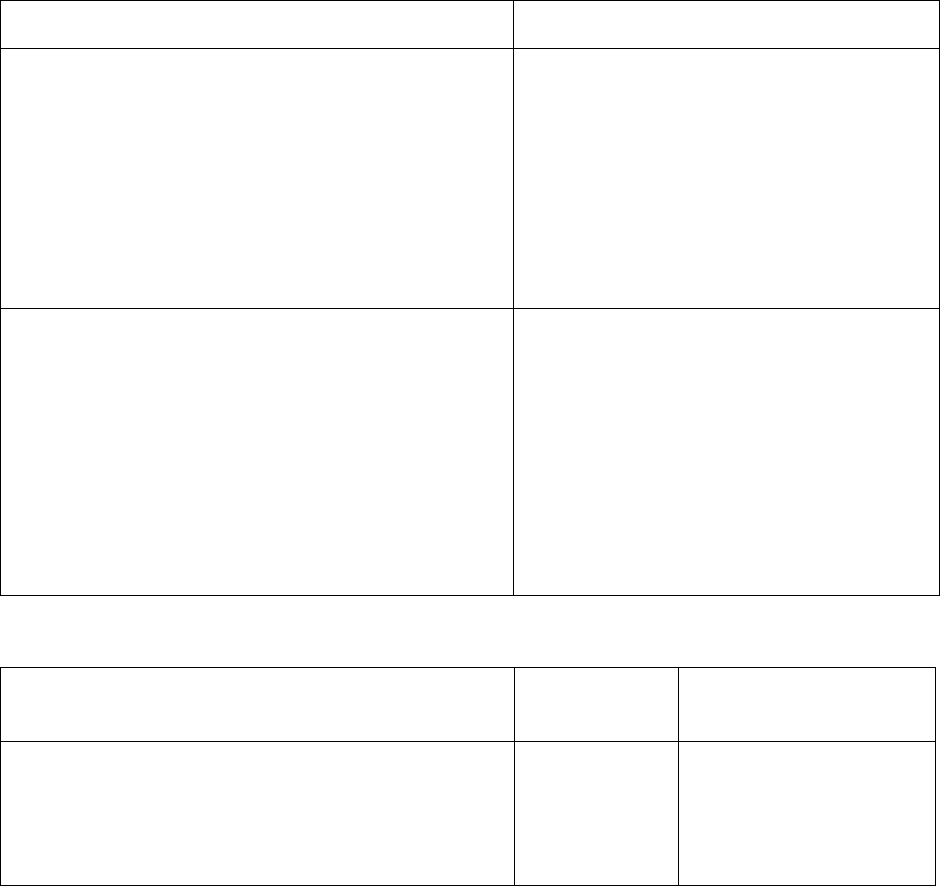
23
Upstate CDG Projects that qualify as Community Benefit Projects
(Capacity will be drawn from the total 860 MW block above)
Project Type
Adder $/Watt
• Upstate CDG project that received MW Block
and/or Community Adder
• ≥50% of ICSA capacity filled with Eligible
Residential Subscribers
• Minimum guaranteed discount of 20% for
providing 3 criteria, or 15% for providing all 5.
• Achieves all the requirements to qualify as a
Community Benefit Project
$0.20
• Upstate CDG project that received Phase One NEM,
the Market Transition Credit, or the Community
Credit
• ≥50% of ICSA capacity filled with Eligible
Residential Subscribers
• Minimum guaranteed discount of 20% for
providing 3 criteria, or 15% for providing all 5.
• Achieves all the requirements to qualify as a
Community Benefit Project
$0.15
Incentive Levels for ConEd CDG Projects
Project Type Adder $/Watt
Initial Adder Capacity
Block (MW)
• Con Edison CDG Project
• Minimum guaranteed discount of 10%
• ≥50% of ICSA capacity filled with Eligible Residential
Subscribers
$0.20 100 MW
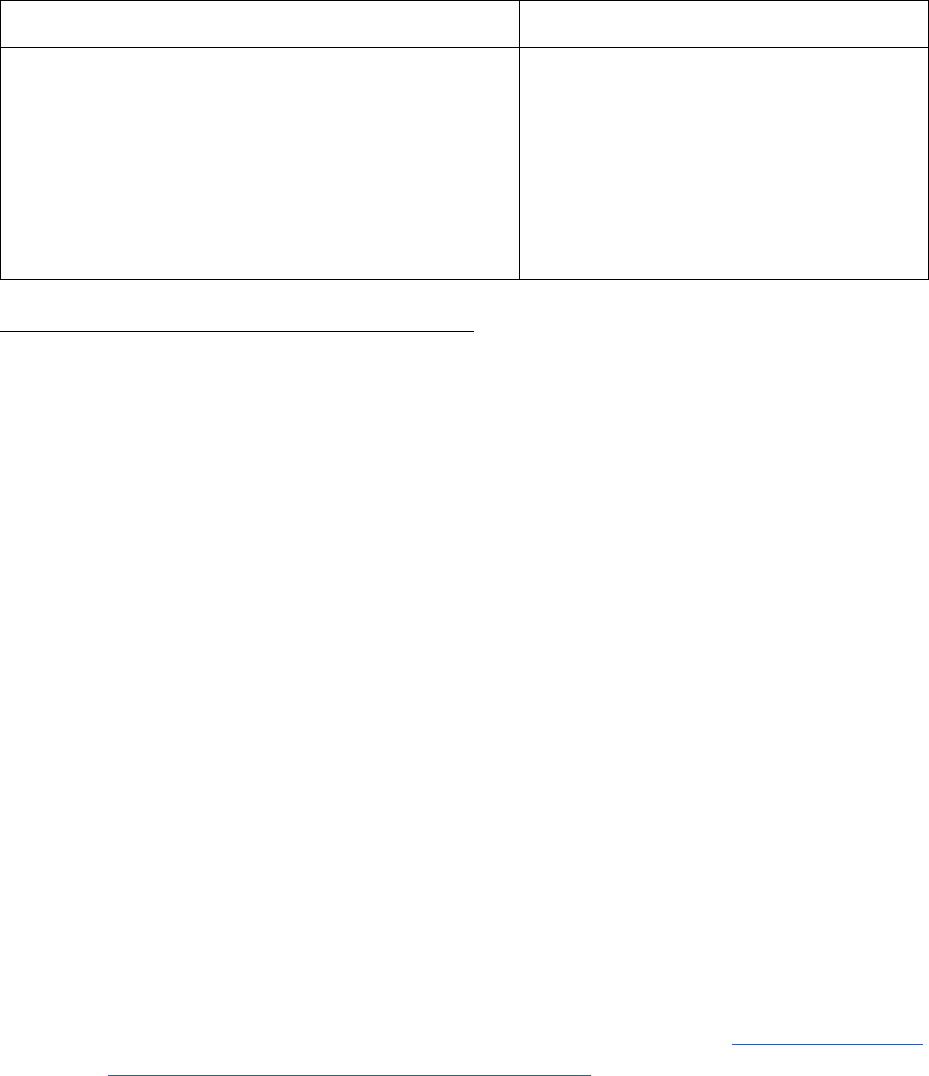
24
ConEd CDG Projects that qualify as Community Benefit Projects
(Capacity will be drawn from the 100 MW block above)
Project Type
Adder $/Watt
• Con Edison CDG Project
• Minimum guaranteed discount of 20% for providing
3 criteria, or 15% for providing all 5.
• ≥50% of ICSA capacity filled with Eligible Residential
Subscribers
Achieves all the requirements to qualify as a Community
Benefit Project
$0.30
Incentive Requirements: Community Benefit Projects
Projects in the Upstate and ConEd regions can qualify as Community Benefit Projects, which are projects
that provide a higher bill discount, incorporate measures that increase access to community solar, and
demonstrate a greater commitment to the Eligible Subscribers and their surrounding communities as
discussed below.
Community Benefit Projects can either provide a 20% bill discount to all eligible subscribers and meet at
least 3 of the following criteria, or provide a 15% bill discount and meet all 5 of the following criteria.
1. Demonstrated close partnerships with community organizations and stakeholders from the
DAC local to the project site throughout the project development process, including siting,
construction, and customer outreach.
• A close partnership must be demonstrated using the following:
o A letter or email from community organizations within the DAC that verifies participation in the
project development process and details at what level and how long they have been involved.
o A memorandum of understanding between the project team and the community organization(s)
from within the DAC outlining the activities that they are part of in the project development
process.
• Note: A project in which the partnership with a community organization is limited to
conducting customer acquisition/outreach does not qualify for this criterion.
2. Workforce training and hiring commitments of Priority Populations or members of the
surrounding DAC.
• Projects can demonstrate commitment by participating in NYSERDA’s
Program Opportunity
Notice (PON) 3982: On the Job Training (OJT) Program. Projects must receive an acceptance
of a Business Application and submission and acceptance of New Hire Applications from
Priority Populations as defined by the PON.
3. Community based or participant ownership models.
25
• The contractor must submit a written summary that outlines the following:
o If and how the project will be owned by DAC stakeholders or a community organization that
serves a DAC. Detail if it will be full ownership, majority stake, or another model.
o Details on how the project profits, including how the profit will be collected, stored, and
distributed.
o Details on what the governance structure will be for the projects and its monetary and non-
monetary benefits, including ownership, control, and voting rights for all parties.
4. Dedicated strategy to target individuals in DACs with Limited English Proficiency.
• Projects must submit marketing materials, contracting materials and customer service
protocol that demonstrate reasonable support for the targeted customer segment.
5. Sited within a DAC and serving eligible subscribers in the surrounding community.
• All capacity must be dedicated to subscribers from the surrounding community, defined as
o For ConEd Projects: within a 1-mile radius of the project site address
o For Upstate Projects: the same or adjacent census tract[s] of the project site address
• At least 60% of project capacity must be dedicated to eligible residential subscribers
Bill Discount
Projects that receive an ICSA Award must provide at minimum a 10% bill credit discount rate.
Community Benefit Projects must provide at minimum a 20% bill discount to all eligible subscribers if
they meet 3 of the 5 project criteria; or at minimum a 15% bill discount and if they meet all 5 of the
Community Benefit project criteria.
For customers billed through net crediting, the bill credit discount rate is the same as the net credit rate.
For customers that receive a separate bill from the CDG provider or other party, the bill credit discount
rate is calculated by starting with the value of the CDG bill credits distributed to the ICSA-eligible
subscriber, subtracting all payments made by the customer, and then dividing that difference by the
value of the CDG bill credits distributed to the ICSA-eligible subscriber. Customers may not be offered
any additional products that could reduce the required bill credit discount rate, such as retail electricity
(ESCO) supply without guaranteed savings, or a requirement to make additional payments.
Adjustments for projects receiving Bonus Investment Tax Credits
Project owners are encouraged to apply for the federal Low-Income Communities Bonus Credits (Bonus
Credits), established under sections 48(e) and 48E(h) of the Inflation Reduction Act of 2022, also known
as the "Special Programs for Certain Facilities Placed in Service in Connection with Low-income
Communities”. The project owner must inform NYSERDA when the project receives an allocation of
Bonus Credits. In the event that the associated project with an ICSA award receives an allocation of
Bonus Credits under Category 4: Qualified Low-Income Economic Benefit Project, NYSERDA will not
adjust the project’s ICSA award level. However, the associated project must provide a 20% bill credit
discount to all ICSA-eligible customers. Allocation of Bonus Credits in other categories will not trigger a
change in the required ICSA bill credit discount rate. Submittal of an application for Bonus Credits not

26
resulting in a project receiving the additional Investment Tax Credits will not trigger an adjustment to
the required ICSA bill credit discount rate.
Eligible Subscribers
To be eligible for the ICSA, a project must allocate between 40% and 100% of its project capacity to
eligible Residential and Affordable Housing/Nonresidential subscribers. At least 50% of the project’s
ICSA capacity must be comprised of Residential Customers.
For example: If a 1MW project plans to fill 60% (600 kW) of its project with ICSA-eligible
subscribers, 50% of the ICSA capacity (i.e., 600kW *.5 = 300kW) must be filled with Eligible
Residential Subscribers.
Any individual subscriber may only be used once to determine ICSA funding for a single project. The
total ICSA funding that a project may claim is determined by the capacity allocated to eligible
subscribers, as defined below.
Residential Subscribers
Any residential electric utility customer, including homeowners, renters, and residents of multifamily
buildings can be eligible if they meet the criteria below. Once a residential electric utility customer has
been deemed eligible and allocated to a project, they will be considered eligible for the duration of the
project, including if they choose to move within the utility service territory.
Eligibility for individual Residential Subscribers may be established by:
Categorical Eligibility: Subscriber eligibility is demonstrated by documented participation in one
of the assistance programs listed in the Table below.
EmPower New York Award Letter dated within 12 months of the customer agreement signature
HEAP Award Letter dated within 12 months of the customer agreement signature
HEAP or Energy Utility Assistance
listed on the utility bill
Utility bill must be within the past 12 months of the customer
agreement signature
SNAP Award Letter dated within 12 months of the customer agreement signature
TANF Award Letter dated within 12 months of the customer agreement signature
Supplemental Social Security Income
Award Letter
dated within 12 months of the customer agreement signature
Note: Projects may use the NYSERDA Income Eligibility Application process to demonstrate eligibility
for individual residential subscribers as an alternative to collecting and storing eligibility
documentation. Review https://nyserda.seamlessdocs.com/f/Income_Eligibility
for more details.

27
Geo-eligibility: Residential subscriber eligibility is demonstrated with geo-eligibility by
• residence in a Disadvantaged Community as defined by the Final Disadvantaged
Communities Criteria (DAC criteria).
• residence in an EmPower New York pre-screened area
o The map which shows the pre-screened areas can be found at
https://www.nyserda.ny.gov/ny/ahp-empower/geo-eligible-income-tool
Individual Household Eligibility: Any residential subscriber is considered eligible if they have a
documented household income under 80% of Area Median Income (AMI) or 80% of State
Median Income (SMI), whichever is higher.
• Individual household eligibility must be established by the customer by completing the
NYSERDA Income Eligibility Application found at
https://nyserda.seamlessdocs.com/f/Income_Eligibility
.
Nonresidential Subscribers
The following types of nonresidential utility accounts are considered eligible subscribers for the ICSA:
Nonprofit/public facilities serving DACs: Accounts serving nonprofit organizations or public
facilities that 1) meet the criteria of “small” subscribers per the CDG rules (non-demand account
or demand account with an average peak monthly demand of less than 25 kW), and 2) are
located within and serve a designated DAC. Subscribers must be deemed qualified by NYSERDA
prior to the submission of an ICSA invoice by the project.
Public Schools: Accounts serving existing public school buildings across New York State that are
designated eligible for PON 4924: P-12 Schools – Clean Green Schools Initiative
can be
considered eligible non-residential subscribers for the ICSA.
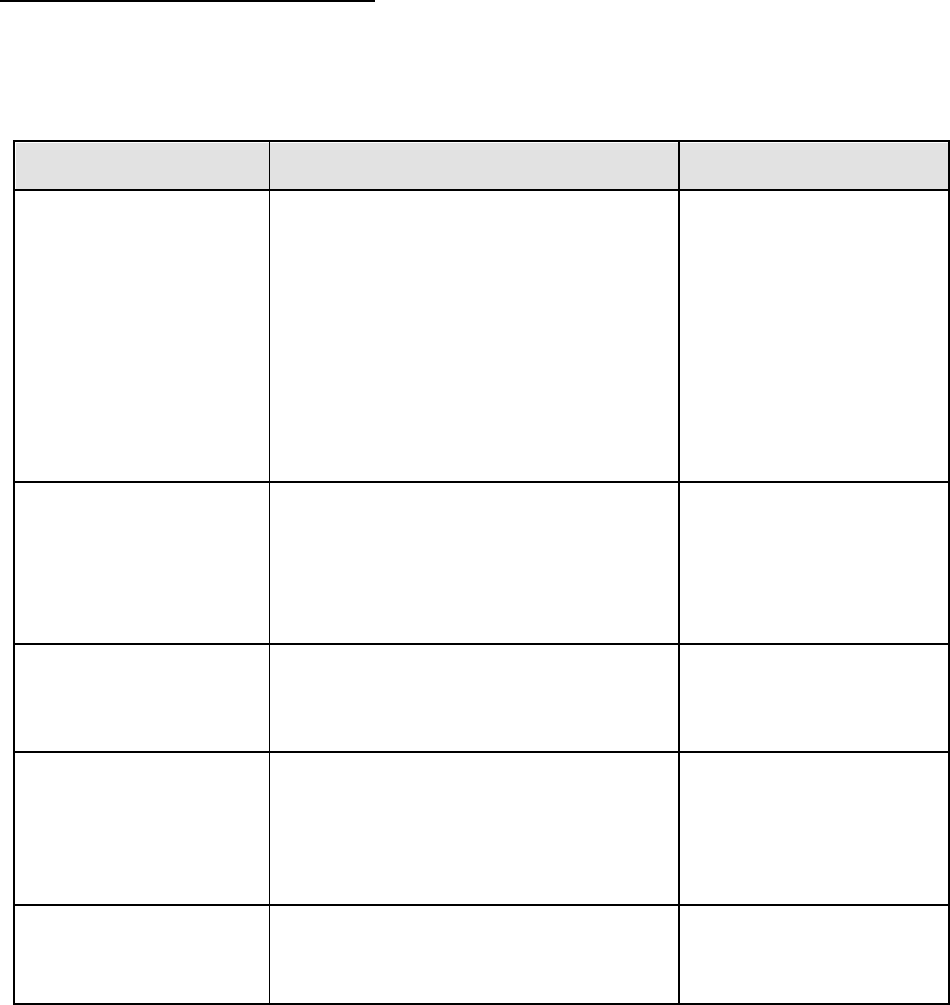
28
Affordable Housing Property Participation
All affordable housing properties seeking to participate in ICSA projects must provide proof of their
affordable housing status using one of the following documents. Properties must be deemed qualified
by NYSERDA prior to the submission of an ICSA invoice by the project.
Eligibility Proxy
Details
Documentation Required
A. US HUD, USDA-RD, and
other Federally Regulated
LMI Housing
Properties that receive subsidies from HUD or
USDA-RD based on household income may be
defined as LMI, based on household income
criteria detailed in the contract or award,
including regulatory control or structures such
as:
1. Project-based Section 8
2. Sections 202, 236, 811
3. Public Housing Authorities
Copy of the HUD contract or
contract award notice
B. NYS HCR-Regulated
Affordable Housing
Properties with subsidized mortgages or
contracts that place them under the regulatory
control of HCR may be defined as LMI, based
on household income criteria detailed in the
HCR contract or award
Copy of HCR contract or
contract award notice
C. Low Income Housing Tax
Credits
Properties that receive tax credits may be
defined as LMI based on household income
criteria detailed in the tax credit award notice
Copy of tax credit award
notice from HCR or HPD.
D. NYCHPD-Regulated LMI
Housing (or similar local
housing agencies)
Properties with loans, mortgages, or deeds of
purchase (HDFC incorporation) from NYCHPD
or similar local housing agencies may be
defined as LMI, based on household income
criteria detailed in the award documentation
Documentation of current
mortgage, loan closing, HDFC
incorporation, or deeds
E. SONYMA Mortgage
Insurance
Properties subsidized for low- to moderate-
income multi-family residents with SONYMA
subsidized financing through the HFA
Copy of loan
closing/mortgage insurance
award documents
Any documentation submitted to provide proof of affordable housing status must also have the
following information within the document:
The specific addresses covered by the document.
The income requirements for the building residents and the number of units covered by that
income requirement.

29
The ICSA is intended for community solar projects located remotely from the eligible affordable housing
property. Please see the Multifamily Affordable Housing Incentive section of this Program Manual for
projects that are sited at eligible affordable housing properties (i.e., a solar project on the roof of a
building that is regulated affordable housing).
Affordable Housing Residential Subscriber Eligibility: All residents of a regulated affordable
housing property can be deemed eligible if:
• the property meets the building eligibility requirements listed above,
• the residents have their own electric accounts and pay their own electricity bills,
• residence is limited to LMI households (80% AMI or below), and
• participation in CDG will not result in increased costs (e.g., rent or common charge increase)
for the residential subscriber due to the utility allowance mechanism or other policies or
practices.
Affordable Housing Nonresidential Subscriber Eligibility: Nonresidential demand and non-
demand accounts serving an eligible affordable housing property (i.e., building/common area
meter) are considered eligible subscribers.
Master-Metered Affordable Housing Property Eligibility:
Project capacity allocated to master-metered affordable housing property can be considered as
eligible nonresidential capacity or as eligible residential capacity depending on which specific
requirements are met.
• Nonresidential subscriber designation: Master metered affordable housing properties can
be deemed eligible non-residential subscribers if they meet the Affordable Housing
Nonresidential Subscriber eligibility. Master-metered affordable housing properties that are
not distributing the community solar savings to their residential occupants or do not qualify
for a distribution exemption will be considered non-residential subscribers.
• R
esidential subscriber designation: For master metered affordable housing properties to be
considered a residential subscriber and be counted towards a project’s required 50%
residential capacity, residence must be limited to LMI households (80% AMI or below), and
the project must demonstrate that at minimum 50% of the value of the community solar
savings is being distributed to the properties’ residential occupants.
The properties are required to demonstrate to NYSERDA the community solar value
distribution. The demonstration process depends on the properties’ metering method.
o For properties where residents are sub-metered: specify how the required bill discount or its
equivalent, will be provided to building residents who are considered eligible residential
subscribers. The savings that each resident will receive must be equivalent to what they would
receive had they signed up for community solar themselves. The total savings distributed to the
residential occupants must be at minimum 50% of the value of the community solar savings/net
credits from the community solar subscription on the master metered account.

30
- Demonstration of value distribution: Distribution of value must be demonstrated
with the following documentation.
• At the time of milestone submission: an affidavit from the affordable
housing property that details the total community solar savings, the total
amount that will be distributed to the residents, and the mechanism that
will be used to distribute the value.
• If requested by NYSERDA, the building is required to demonstrate evidence
of the savings being applied to accounts of the sub-metered building
occupants.
o For properties where residents are not sub-metered: demonstrate how the project will direct
part of the value of the community solar net credits to the residential occupants. The total
savings that the ICSA-eligible residential occupants will receive must be at minimum 50% of the
value of the community solar savings/net credits from the community solar subscription on the
master metered account. The value of those credits must be distributed equitably, either equal
shares among the qualified residential property’s units, distributing proportional shares based on
each unit’s electricity usage, or using the savings for allowed activities listed in the U.S.
Department of Housing and Urban Development (HUD) memo Treatment of Solar Benefits in
Master-metered Buildings
6
. The value must be distributed in a manner that does not negatively
impact the building residents’ utility allowances and/or annual income for rent calculations.
- Demonstration of value distribution: Distribution of value must be demonstrated
with the following documentation.
• At the time of application: A Benefits Sharing Statement indicating the
building’s commitment to distribute no less than 50% of the value of the
community solar savings/net credits to residents, estimating the total value
that will be distributed to residents, and describing the HUD-compliant
mechanism that will be used for distribution.
• At the time of milestone submission: an affidavit from the affordable
housing property that details how the Benefit Sharing Statement has been
implemented, including the total community solar savings, the total amount
that will be distributed to the residents, and the mechanism that will be
used to distribute the value.
• Allowed value distribution mechanisms include all those listed in the
HUD guidance memo, except for “additional support staff,” or anything
listed that could negatively impact the building residents’ utility
allowances and/or annual income for rent calculations.
• NYSERDA reserves the right to request asset management reports,
receipts, or other accounting documentation that demonstrates how
the actual community solar savings are being applied.
o HDFCs and MHAs pass-through exemption: Master-metered properties that are categorized as
Housing Development Fund Corporation (HDFCs) and Mutual Housing Association (MHAs)
6
https://www.hud.gov/sites/dfil es/Housing/documents /MF_Memo_re_Community_Solar_Credits _in_MM_Buildings.pdf

31
cooperatives can apply for an exemption from demonstrating pass-through and still be
considered eligible residential subscribers provided they can demonstrate the following.
- The cooperative has an HDFC regulatory agreement with NYC Housing and
Preservation Development (HPD) or NYC Housing Development Corporation (HDC)
demonstrating that all of their residents are LMI (80% AMI or below).
- They have an official document that demonstrates the building is cooperatively
owned by all residents.
Applying for the Inclusive Community Solar Adder
Submitting a Project Application
Projects that are in the Commercial/Industrial or Nonresidential incentive program with a “Submitted”
or “Received” status may prepare and submit an ICSA application through the NYSERDA Portal. The ICSA
will not be approved prior to the approval of the associated NY-Sun project.
Visit nyserda.ny.gov/solar-contractor-resources
for the ICSA Application Guide, which includes step-by-
step instructions. An ICSA application may only be submitted by the NY-Sun Participating Contractor for
the associated project, and the same Payee must be used for the ICSA as all the other NY-Sun incentives
for the project. A Full Assignment or Payment Assignment of the associated NY-Sun project application
will result in the same assignment of the ICSA application. Contractors that plan to sell their project are
encouraged to notify NYSERDA early in the process to ensure an expedient assignment process.
Submitting a Portfolio of Projects
Contractors must use the Portfolio Submission process (outlined below) if they plan to use the same
acquisition provider, subscription manager, acquisition strategy and customer engagement protocol for
multiple projects. With the Portfolio Submission process, a contractor first submits one complete
application (known as the Primary Application) to be reviewed by NYSERDA. Once that application is
reviewed and approved, the contractor will be allowed to submit other applications (known as
Subsequent Applications) that use the same acquisition provider, subscription manager, acquisition
strategy, and customer engagement protocol as the Primary Application.
Step 1: Contractor submits the Primary Application in the NYSERDA Portal, including all the
required Application Elements outlined in the table below.
Step 2: NYSERDA will review the Primary Application and the required Application Elements and
conduct a review call if needed.
Step 3: NYSERDA will make a determination of approve, reject, or modify and notify the
applicant.
• Once the Primary Application is approved and awarded, the contractor can then submit
Subsequent Application(s) and the required Application Elements.
Step 4: NYSERDA will review the Subsequent Application(s) and the required Application
Elements and conduct a review call if needed.

32
ICSA Application Elements
An ICSA application must include the following. Applications missing these elements may be rejected outright:
Primary
Application
Subsequent
Application
The application number of the associated NY-Sun project. √ √
The actual Community Distributed Generation Disclosure Form for the project
that a customer will be subject to.
√ √
The actual residential subscriber contract that a customer will be subject to.
All residential subscription contracts for allocated capacity receiving the ICSA
must meet the following requirements:
Compliance with all terms of the UBP-DERs, and
Guaranteed savings (discount) rate of no less than 10%
For Community Benefit Projects: minimum guaranteed discount of 20%
for providing 3 criteria, or 15% for providing all 5
√ √
For projects that achieve commercial operation after June 7, 2022, but before
October 12, 2023: the initial allocation report and the initial host summary
report for the project(s).
√ √
For projects that achieve commercial operation after June 7, 2022, but before
October 12, 2023: Letter confirming commercial operation from the utility.
√ √
An affidavit signed by the primary contractor and the subscription provider
confirming they have entered into a contract for working together on the ICSA
projects. The affidavit must clearly demonstrate the relationship between the
primary contractor and the subscription provider, and the roles and
responsibilities for each one of them for the ICSA Project.
There cannot be multiple possible customer acquisition providers per
application. One acquisition provider must be selected prior to
application submission.
√
√
A list of all the projects (including the NY-Sun application number, their site
address, kW capacity, and utility) that will be submitted subsequently as part of
the portfolio.
√
Marketing & Implementation Plan. Requirements are described below. √
Example Marketing Materials, including doorhangers, one-pagers, fact sheets,
advertising, and screen captures of web advertising.
√
Customer experience demonstration: A video screen-capture of the journey
that a customer experiences as they sign up for the community solar product.
NYSERDA may request a test log-in to experience the customer sign-up process
if the video does not sufficiently capture the experience.
√
Subsequent Application Attestation √

33
Marketing & Implementation Plan Requirements
Contractors must submit a Marketing & Implementation Plan and supporting documentation for each
project seeking the ICSA. Use of the Marketing & Implementation Plan Form is required and available at
nyserda.ny.gov/solar-contractor-resources
. Through the Marketing & Implementation Plan and
supporting documentation, the Contractor must demonstrate that:
The Contractor, or customer acquisition and customer management provider(s) to be used, has
the appropriate experience and capability to fulfill the requirements of the ICSA.
• A detailed listing of all the contractors and subcontractors supporting customer acquisition
and customer management is required. Failure to provide this listing may result in
automatic rejection of the application.
The Contractor has the ability to achieve the targeted percentage of eligible subscribers
identified in the project’s ICSA application, demonstrated by a detailed marketing and sales
strategy, sample materials, and/or existing executed subscription contracts, letters of intent
(LOIs), or other supporting documentation.
Customer acquisition strategies will be allowed to use door-to-door sales if the following criteria
are met. This information must be described and shared at the time of the application.
• Contractor is in good standing with DPS
• The project’s customer acquisition team has a system in place that will easily identify which
of their contractors and/or sales associates are in the field at what time, so that it will be
possible to determine responsibility in the event of a customer complaint
• A signature is collected from the customer when the customer elects to sign up for the
community solar project
o A record of the customer signature from online or paper sign up must be stored for at least five
years
• If a customer signs up via door-to-door or over the phone on or after November 1, 2023, the
project’s customer acquisition team is required to call the customer after the interaction
and get verbal confirmation from the customer of their interest in signing up for the
community solar product. This phone call must happen after the customer signs up and
before the customer is assigned to a project.
o The recording of the post-signup confirmation call must be stored for at least five years.
• Contractor must list all the subcontractors that are working on customer acquisition and
customer management activities. Updates must be submitted to NYSERDA before a new
subcontractor begins working on such activities.
Failure to adhere to any of the above requirements after a project receives an ICSA award may result in
NYSERDA rescinding the award or rejecting invoice(s).

34
Community Solar Product Requirements
The actual residential subscriber contract and Community Distributed Generation Disclosure
Form that a customer will be subject to must be shared with NYSERDA at time of application.
Projects must also make accessible the actual Community Distributed Generation Disclosure
Form associated with each project on their website for a customer to review prior to providing
any personal information, including name and email address.
NYSERDA reserves the right to publish the submitted Community Distributed Generation
Disclosure Form on a central webpage listing all the community solar projects.
The customer acquisition strategy will not require minimum FICO scores for the portion of the project
used to demonstrate eligibility for the ICSA. The Contractor can use an alternative option, such as utility
bill payment history, to qualify ICSA-eligible subscribers.
Additional Marketing and Implementation Plan requirements for Community Benefit Projects
Projects seeking to be considered Community Benefits Projects must provide additional community
benefits beyond cost savings to subscribers and demonstrate they will be able to achieve the additional
criteria required for this higher incentive. Information about what qualifies as additional community
benefits can be found in the Incentive Levels sub-section of the Inclusive Community Solar Adder section
in this Program Manual and in the Marketing and Implementation Plan Form.
Project Application Review
Primary Applications will be reviewed in the order that they are received until all available funding is
fully committed. Should NYSERDA have questions or concerns regarding the supporting materials,
NYSERDA may request a review meeting to address as such regarding the supporting materials.
Completed Primary Applications without missing materials or incomplete information, will be processed
for an award within 60 days of application submission.
Applications without an identified acquisition team and strategy may be rejected with no additional
opportunity to cure the Applications. NYSERDA reserves the right to reject any application that is missing
details or elements, at any point during the application review period and without conducting a review
call. Applications that are rejected can reapply but will be queued with a new application date.
For the Subsequent Application: NYSERDA may reject subsequent applications even if the Primary
Application is approved if the project team fails to prove that they can achieve the applied-for targets
due to the size of the portfolio.

35
Project Changes
The contractor must notify NYSERDA of one or more of the following changes that may occur after
NYSERDA’s approval of a Primary or Subsequent Application.
Change in the acquisition provider.
Change in the subscription manager.
Changes to the terms of the customer subscription contract or the CDG Disclosure Form.
Substantial outreach strategy changes from what was listed in the application. This includes the
inclusion of tactics not outlined in the Marketing and Implementation Plan, and a significant
change in messaging in the marketing materials.
The Eligible Subscriber Target (EST) mix differs from what was listed in the application.
Project changes must be made through the Request for Modification process in the NYSERDA Portal as
soon as they occur. Upon receipt of the Request for Modification, NYSERDA will assess if the project
continues to be eligible for the ICSA incentive. Failure to make NYSERDA aware of the changes prior to
the first invoice or subsequent invoice submissions may result in rejecting the invoice(s) or cancellation
of the award.
NYSERDA reserves the right to require resubmission of Application Elements and may rescind the award
if the changes fail to meet the requirements of the ICSA.
Round 1 ICSA Awardees Using Round 2 Eligible Subscriber Criteria
ICSA Round 1 Projects are permitted to use the Round 2 Eligible Subscriber Criteria (i.e., the Round 2
rules around qualifying residential, nonresidential, and affordable housing subscribers) provided they
agree to the following additional terms for their Round 1 awards.
1. Compliance with the additional criteria required to perform door to door sales
2. Adherence to the requirements of long-term subscriber make-up
3. Adherence to any adjustments that Round 2 Projects are subject to if they receive Bonus
Credits.
Round 1 Projects interested in opting into the Round 2 Eligible Subscriber Criteria will be required to
submit an opt-in request for NYSERDA’s consideration and approval prior to submitting their first
invoice. The Opt-In Request to Round 2 Subscriber Criteria Form can be found in the “Inclusive
Community Solar Adder Resources” section at nyserda.ny.gov/solar-contractor-resources
.

36
1.5 Green Jobs-Green NY Financing
Residential Customers
A residential customer with an existing home of four units or less may be eligible to finance the
purchase of their solar electric system through NYSERDA’s Green Jobs – Green New York (GJGNY) loan
program using either a Smart Energy Loan or On-Bill Recovery. Residential Members of CDG projects,
or homeowners leasing the solar project or entering into a Power Purchase Agreement (PPA), are not
eligible for GJGNY financing.
Residential customers may also utilize a Bridge Loan, allowing access to short-term financing to borrow
a portion of the renewable energy system cost that may be eligible for a federal or state tax credit or a
New York City Real Property Tax Abatement. The Bridge Loan has a balloon payment of principal and
interest due at maturity. Borrowers can pair this loan with a Smart Energy or On-Bill Recovery Loan
(total cannot exceed $25,000).
To access the loans, a contractor must register with the GJGNY service provider.
To register, visit nyserda.ny.gov/solar-contractor-resources
a
nd complete and submit the loan servicer’s
contractor application packet. Contractors offering GJGNY financing are bound by the GJGNY
participation agreement and the NYSERDA Residential Financing Program Manual. In the event a
contractor is in arrears on GJGNY program funds, NYSERDA may exercise its right to set-off NY-Sun
incentive payments to cover amounts owed by the contractor.
Customers can apply online or download an application at www.energyfinancesolutions.com.
Nonresidential and Not-for-Profit Customers
A nonresidential or not-for-profit customer may be eligible to finance the purchase of their solar
electric system through NYSERDA’s GJGNY loan program. A customer who wishes to finance their
system will rely on the contractor to submit a request for financing to NYSERDA on their behalf.
NYSERDA will review the request for financing and provide the customer with a letter approving or
denying the eligibility of the system. If the system is approved as eligible by NYSERDA, the customer
must submit the approval letter to a participating lender as part of their loan application. If the
customer is approved for financing by the lender, the customer will receive the loan proceeds directly
from the lender. Go to nyserda.ny.gov/small-commercial-financing
fo
r additional information on
GJGNY financing for nonresidential and not-for-profit customers.
Contractors should email a completed application packet to: efs@energyfinancesolutions.com.
Application packets can be found at nyserda.ny.gov/solar-contractor-resources. Notification of
approval or request for additional information can be expected within five days.
Commercial members of CDG projects, or those leasing the solar project or entering into a
P
ower Purchase Agreement (PPA), are not eligible for GJGNY financing.

37
1.6 Assignments
Residential Projects
Incentive payments will be made to the contractor only. Payment Assignments and/or Full
Assignments are not allowed for residential projects.
Nonresidential Projects
1.6.2.1
Payment Assignments
Nonresidential projects may request payments be made to another entity. Payment Assignments,
including any eligible incentive adders, will only be made to another entity in the amount of the entire
incentive. The contractor or builder, customer, and payee must sign the project application agreeing to
the payee assignment. All rights and responsibilities will remain with the contractor and builder.
A Payment assignment should only be submitted once the final payee is confirmed, and the EIN
information is a match with the IRS. A NY-Sun contract with an associated ICSA contract or an associated
Expanded Solar for All Category B contract must identify the same Payee for both contracts. Once
NYSERDA approves a Payment Assignment, no additional Payee Assignments will be allowed.
Once the request has been submitted, the payee will receive a payee registration form via email. This
form must be completed for the application to move forward. Payees will not have access to the portal.
1.6.2.2
Full Assignments
The Contractor may request a one-time Full Assignment to another approved contractor for an
approved project. During the Full Assignment request a new payee may be identified if necessary. If the
NY-Sun Contract is associated with an ICSA contract or an associated Expanded Solar for All Category B
contract then both contracts must be assigned to the same contractor and the same payee. An
assignment request must be submitted via the portal. This request must be made before the
commercial operational payment is requested. NYSERDA reserves the right to deny a full assignment
request and may ask for additional documentation before approving the request. The Contractor is
responsible for notifying NYSERDA when a project has been sold to another entity. The Contractor of
record is responsible for all program requirements until a formal assignment has been approved by
NYSERDA, regardless of who owns the project prior to approval of the assignment.
The contractor must provide the following to submit a request:
New Contractor must be an approved contractor in the program and be in good standing.
Email confirmation from utility of 100% interconnection upgrade payments made.
Assignment Document signed by the prior contractor and new contractor.

38
New Project Application signed by the prior contractor, new contractor, customer,
and payee (if applicable).
For projects approved prior to April 2023, if a payee was identified at the time of application
and will remain the same, the payee must register after the Full Assignment request is
submitted. If a new payee is to be identified, the contractor must update the role in the portal,
and the payee must register after the Full Assignment request is submitted.
No Payment Assignments will be allowed after the Full Assignment has been executed by NYSERDA.
Payment Assignments, including any eligible incentive adders, will only be made to a payee in the
amount of the entire incentive. The current contractor will be responsible for the project until the
assignment has been executed. For the effective implementation of the Full Assignment and Payment
Assignment, NYSERDA retains the authority to require additional documents and exercise reasonable
discretion in interpreting or implementing these requirements.
Commercial/Industrial Projects
1.6.3.1
Payment Assignments
Commercial/industrial projects may request payments be made to another entity. While the contractor
may identify the payee at the time of application or any time during the project development phase,
NYSERDA will only allow Payment assignment during a one-time Full Assignment request or immediately
prior to submitting an invoice for the commercial operation payment. A Payment assignment should
only be submitted once the final payee is confirmed, and the EIN information is a match with the IRS.
Payment assignments, including any eligible incentive adders, will only be made to another entity in
the amount of the entire incentive. A NY-Sun contract with an associated ICSA contract or an associated
Expanded Solar for All Category B contract must identify the same Payee for both contracts. Once
NYSERDA approves a Payment Assignment, no additional Payee Assignments will be allowed. The
contractor, customer, and payee must sign the project application agreeing to the Payment Assignment.
Contractors shall have the ability to identify a payee at the time of application, however all awards will
be made to the Contractor. A payee’s information will only be confirmed during the Payment
Assignment request or during a Full Assignment request.
All rights and responsibilities will remain with the contractor. Payees will not have access to the project
application portal.
1.6.3.2
Full Assignments
The Contractor may request a one-time Full Assignment to another approved contractor for an
approved project. During the Full Assignment request a new payee may be identified if necessary. If the
NY-Sun Contract is associated with an ICSA contract or an associated Expanded Solar for All Category B
contract then both contracts must be assigned to the same contractor and the same payee. An
assignment request must be submitted via the portal. This request must be made before the
39
commercial operational payment is requested. NYSERDA reserves the right to deny a full assignment
request and may ask for additional documentation before approving the request. The Contractor is
responsible for notifying NYSERDA when a project has been sold to another entity. The Contractor of
record is responsible for all program requirements until a formal assignment has been approved by
NYSERDA, regardless of who owns the project prior to approval of the assignment.
The contractor must provide the following to submit a request:
New Contractor must be an approved contractor in the program and be in good standing.
Email confirmation from utility of 100% interconnection upgrade payments made.
Assignment Document signed by the prior contractor and new contractor.
New Project Application signed by the prior contractor, new contractor, customer,
and payee (if applicable).
For projects approved prior to April 2023, if a payee was identified at the time of application
and will remain the same, the payee must register after the Full Assignment request is
submitted. If a new payee is to be identified, the contractor must update the role in the portal,
and the payee must register after the Full Assignment request is submitted.
No Payment Assignments will be allowed after the Full Assignment has been executed by NYSERDA.
Payment Assignments, including any eligible incentive adders, will only be made to a payee in the
amount of the entire incentive. The current contractor will be responsible for the project until the
assignment has been executed.
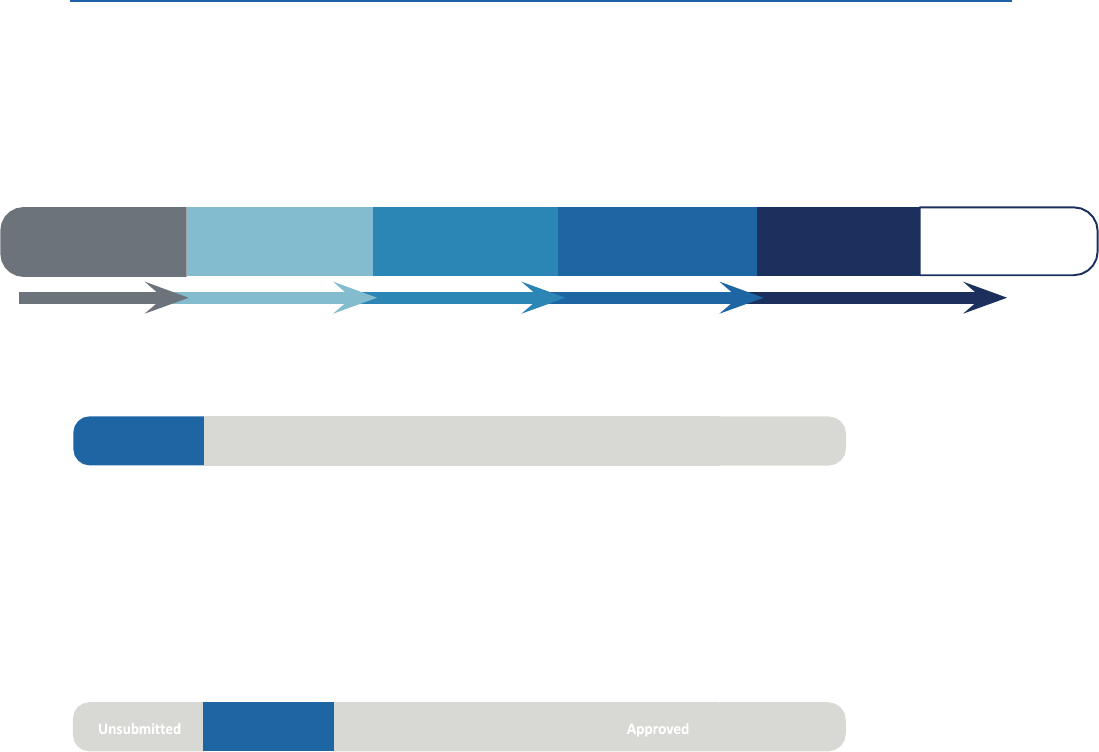
40
2 Applying for Incentives
Approved contractors or builders can submit project applications for incentives, monitor the status
of applications, and perform other program-related activities via the NYSERDA Portal.
The project application will progress through each status shown.
Project Application Flow
2.1
Unsubmitted Status
Unsubmitted Completed Submitted Received Pending Approval Approved
All project applications are generated in and submitted through the portal. Unsubmitted status is
reached once a contractor or builder generates the application. The incentive rate is not confirmed
until the application has been submitted.
2.2
Submitted Status
Completed Pending Approval Received Submitted
The project application moves to submitted status once the contractor or builder submits the
application along with the required documents through the portal. Use the chart to determine
which documents are required with each project application. Once the application is submitted,
the current incentive rate (at that time) is locked in.
Unsubmitted
Completed
Submitted Received
Pending
Approval
Approved
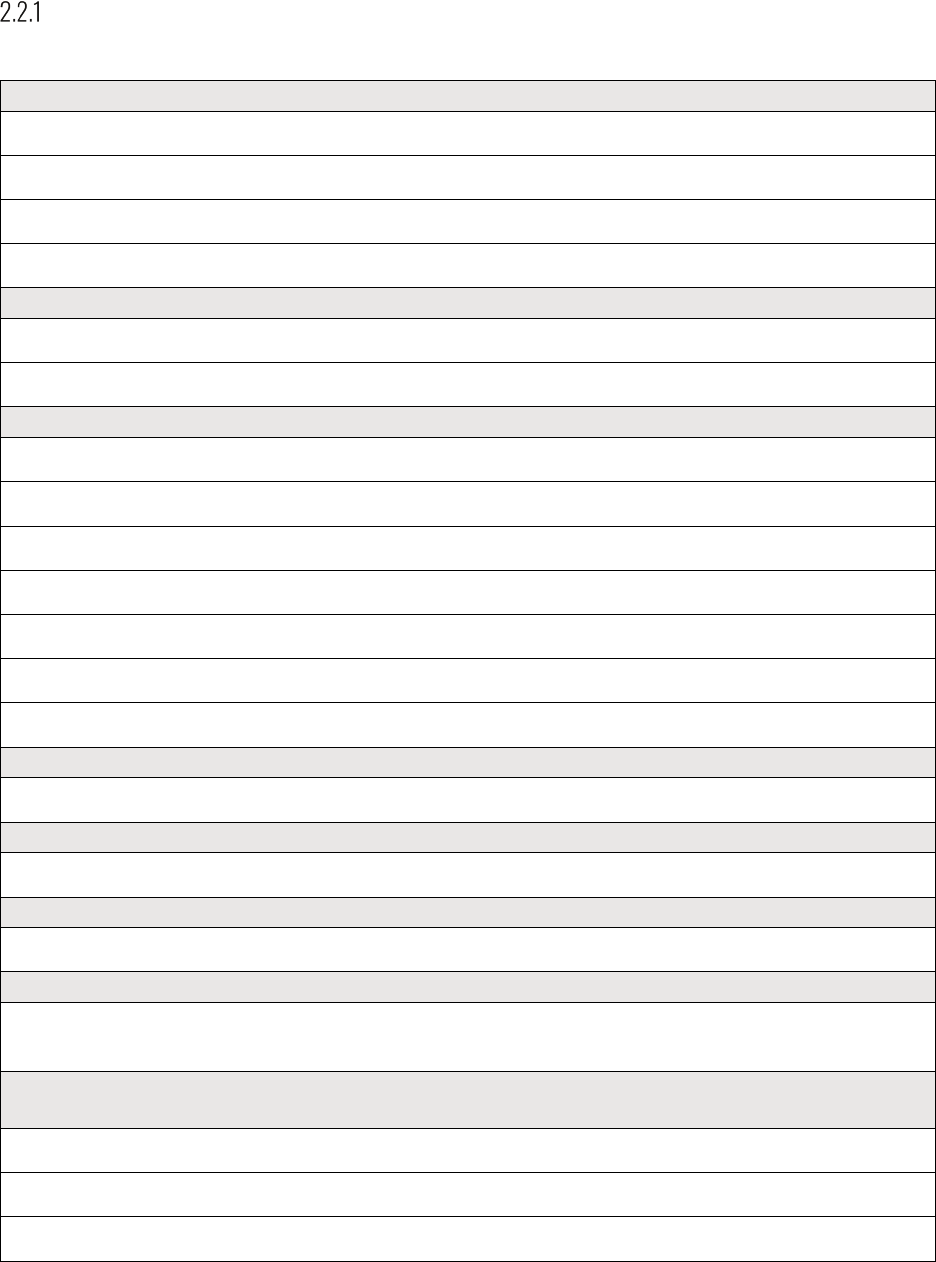
41
Document Details
Project Documents to Reach Submitted Status
Required for All Projects: Must Submit with Project Application
Project application signed by customer and payee, if applicable
Site map (site plan)
Electrical drawing
Customer utility bill – only required for NYPA and municipality owned utilities
Additional Items Required for Residential and Nonresidential Projects
Shading report
Site Photos
Additional Items Required for Nonresidential and Commercial/Industrial Projects
If CESIR required: Final CESIR, proof of 25% interconnection upgrade payment
If no CESIR required: signed and executed interconnection agreement
Documentation of Interconnection Application submitted date (projects 1MW AC and larger only)
Proof of planning and zoning approvals for C/I
Coastal assessment
SEQRA and lead agency, SEQRA Negative Declaration for C/I
GIS data mapping file – for non-rooftop C/I projects only
Additional Items Required for Projects Using Affordable Solar Residential Incentive
Affordable Solar income eligibility notification with the tracking number
Additional Items Required for Projects Using Multifamily Affordable Housing Incentive
Documentation of eligibility
Additional Items Required for Projects Using Brownfield/Landfill Incentive
Brownfield/Landfill eligibility documentation
Additional Items Required for C/I Projects in a State-Certified Agricultural District
Notice of Intent to Undertake an Action within an Agricultural District Submission Form (NOI Submission Form),
along with additional documentation and maps, as indicated therein
Additional Items Required for Projects Using Residential Solar Plus Energy Storage Incentive on Long
Island
Energy storage system and product description
Energy storage safety listings (UL or CAN certifications)
Energy storage system warranty
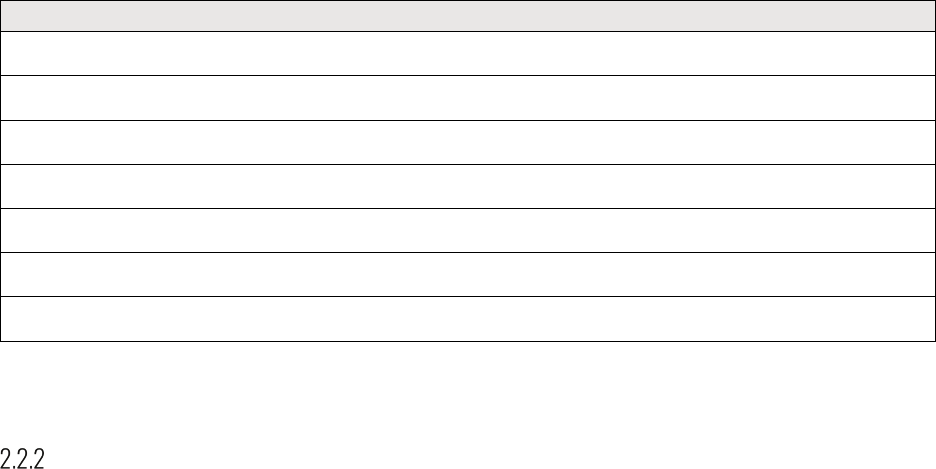
42
Documents Not Required with Submission: Must be Available Upon Request
Required for All Projects
Customer agreement
Customer utility bill
Permits - required with project invoice submission
Environmental assessment - for projects more than 4,000 square feet
Clipboard energy efficiency assessment - for residential projects only
Nonresidential and C/I energy assessment - for nonresidential or C/I projects only
Construction photos of the completed installation
A detailed description of each document can be found on the following pages.
Required Documents That Must Be Submitted with Each Application
Project Application
The contractor or builder must submit all project applications electronically through the portal.
Applications submitted to the residential and nonresidential program must list both a contractor
and builder. Applications submitted to the commercial/industrial program must list a contractor
only. The project application form must be signed by the customer, and if applicable, the payee.
Electronic signatures may be obtained through NYSERDA’s DocuSign account, which is available
in the portal. If a contractor prefers to use their own electronic signature account, the tool
must be NYSERDA approved and a signature verification report must be provided. Approved
electronic signature tools include DocuSign, CudaSign, EchoSign, Adobe, and Seamless Doc.
Electronic signatures must be obtained using the customer’s own email account. Under no
circumstances is a contractor or builder permitted to sign on behalf of the customer.
Site Map (Site Plan)
The site map must include:
• Location of all solar electric system components, including solar electric modules, inverters,
paired electrical storage system (if applicable), disconnects, point of interconnection, and
utility meter.
• Layout of solar electric array, showing the tilt, azimuth, and number of solar electric
modules on each roof face or sub-array.
• Length of all wire runs more than 100 feet.
• Indication of all wire runs where a messenger wire (CAB) system will be used.

43
• Indication of which trees, if any, will be removed prior to system installation.
• For roof mounted projects, structural/mounting details stamped by a NYS licensed
Professional Engineer (PE) or Registered Architect (RA). A stamped engineer’s roof letter
also meets this requirement.
• Customer name and address.
• If applicable, location and layout of all energy storage system components, including
batteries, inverters/chargers, pumps, management system disconnects, point of
interconnection, and utility meter.
Electrical Drawing
A legible electrical diagram is required, using standard symbols to clearly describe the
solar electric system. Either a one- or three-line drawing is acceptable and must indicate:
• Quantity, conductor size, and insulation type of all energized (hot) conductors,
neutral/grounded conductors, and ground conductors.
• Type and characteristics of all raceways, conduit, and enclosures.
• The configuration of solar electric array into electrical strings.
• The voltage and amperage ratings of all combiner boxes, overcurrent protection devices,
switches, inverters, batteries, electrical panels, and other relevant equipment as applicable,
including the rating of the main service panel and its main breaker.
• The quantity, manufacturer, and model of the inverter paired electrical storage system
components (if applicable) and solar electric modules.
• The installed usable storage capacity in kilowatt hours measured in alternating current (AC)
for the energy storage system, if applicable.
• Customer name and address.
Go to nyserda.ny.gov/solar-contractor-resources
f
or a sample wiring diagram and a list
of common design issues.
Customer Utility Bill – required only for NYPA and municipal projects
For projects taking electric service from NYPA or a municipal utility, a copy of the utility
bill is required with application submission.
Required for Residential and Nonresidential Projects
Site Photos
The contractor or builder must take photos of the array location, from both the ground and
roof level, and photos taken looking south. The application must also include photos of the
existing electrical service and the proposed location of the inverter. A single aerial photo does

44
not meet this requirement. Go to nyserda.ny.gov/solar-contractor-resources
for a sample set
of site photos.
• Preexisting Conditions
Photos must document preexisting conditions that do not meet current codes and
standards, including damaged items. As part of the work scope, the contractor or
builder will repair or replace substandard conditions that are hazardous or impact
the installation of the solar electric system.
o When encountering structural deficiencies, all repairs or replacement will be
done under the direction of a NYS licensed Professional Engineer (PE) or
Registered Architect (RA).
o Split bus panelboard and load centers, including fused and circuit breaker styles,
by any manufacturer, will not be used, regardless of the type and location of the solar
interconnection.
o Panelboard and load centers manufactured with FPE Stab-Lock® circuit breakers
or Bulldog/ITE pushmatic-style circuit breakers will not be used for supply side or load side
connection.
o Damaged or severely corroded panelboards, disconnects, or switchboards will
not be used for supply side or load side connection.
o Missing or undersized grounding electrodes, including the grounding electrode conductor (GEC)
and water meter jumpers, must be replaced.
o Existing roof damage in the area of the array must be repaired or replaced.
o When installing a supply side disconnect, at a minimum, the overcurrent
protection device must meet or exceed the available fault current (AIC Rating)
at the existing main service.
Shading Report and Estimate of Annual Output
• Shading Report
The shading report must describe the percentage of the available solar resource the
solar electric array will receive, accounting for losses from shading, array azimuth, and
tilt. Residential and nonresidential projects with a total solar resource fraction (TSRF)
below 70% will receive a reduced incentive, as described in System Losses under the
System Technical Requirements section.
Projects submitted before July 3, 2019, may not cancel and reapply for purposes of
obtaining a larger incentive. Change orders for these projects to obtain an additional
incentive will not be processed.
Reports generated by Solmetric Suneye, Solar Pathfinder, Bright Harvest, Solar Census,
Lightmile, HelioScope, Wiley ASSET, Aurora, Scanifly, Solargraf, IMGING, OpenSolar and
EverBright are acceptable.
In cases where trees or other obstructions must be removed, an incentive payment will
not be made until a new shading report has been submitted to and approved
by NYSERDA.

45
When the solar electric system consists of multiple arrays with different azimuths, tilts,
or shading profiles, a shading report including each array and a weighted
average overall TSRF must be indicated on the shading report.
• Estimate of Annual Output
The estimate of annual output will be calculated in the portal using NREL’s PVWatts
tool, based on information provided by the contractor or builder, including system size,
location, and TSRF. A separate calculation of the solar electric system’s expected annual
production is not necessary.
This estimate will determine if the system offsets more than 110% of the customer’s
annual electric use and is required for residential projects only. The contractor or
builder must use this figure when completing the GJGNY ProForma worksheet for
financing, if applicable.
Customer Contact Information
• The contractor or builder must provide customer contact information including the
customer email address and customer phone number. Providing contractor contact
information in place of the customer contact information will not be permitted.
Required for Nonresidential and Commercial/Industrial Projects
Final CESIR – if CESIR is required
The contractor must submit a copy of the final CESIR if the utility requires it. The following
item must also be included for projects requiring a CESIR:
• Proof of 25% interconnection upgrade payment
The contractor must provide email confirmation from the utility that the
25% interconnection upgrade payment has been made.
Signed and executed interconnection agreement – if no CESIR required
If the utility determines a CESIR is not required for the project, the contractor or
builder must provide a copy of the signed and executed interconnection agreement.
Proof of planning and zoning approvals – C/I only
The contractor must provide proof that all necessary governmental permits and approvals
required have been obtained. This does not include ministerial permits, such as a building
permit. Required approvals include a Special Use Permit, Site Plan Regulations, or similar
approval process and a Negative SEQRA Determination. If these are not required, the contractor
must demonstrate from the Authority Having Jurisdiction, via meeting minutes or local laws,
that the contractor is approved to move forward with the project.

46
Coastal Assessment
The contractor or builder must provide a screen capture from the
New York State Department
of State online GIS tool showing if the project site location is or is not located in a New York
State coastal boundary area and/ or local waterfront revitalization program zone.
SEQRA and lead agency
For projects larger than 4,000 sq. ft, it is the contractor or builder’s responsibility to initiate the
SEQRA process, including filing of the SEQRA form (found on dec.ny.gov
), at the local level and
ensure a lead agent is identified. The contractor or builder will be required to submit the first
half of the SEQRA Form to NYSERDA.
Some projects, such as systems installed on rooftops, brownfields, and landfills, may qualify
as Type II actions (do not require further SEQR review). For these projects, the contractor
must provide a statement indicating why it is a Type II action.
Projects located where the local Authority Having Jurisdiction (AHJ) has adopted a moratorium
that prevents local approval of the project are not eligible to apply to the program while the
moratorium is in effect. For projects where the local AHJ declines to be lead agent for roof
mounted systems, NYSERDA shall issue an independent review.
If C/I project is within an Agricultural District:
• NOI Standard Form and related documentation
Commercial/industrial projects that are proposed within a State-Certified Agricultural
District will require an Agricultural Market Law (AML) Section 305(4) Notice of Intent
(Notice) to be prepared through NYSERDA and filed with the New York State
Department of Agriculture and Markets (NYSAGM). Developers must complete and
submit to NYSERDA the Notice of Intent Submission Form, along with the required
documentation and maps, as indicated on the form. The Notice must examine and
address the impacts to land, farm enterprises, and agricultural resources within the
Agricultural District and must demonstrate how such impacts will be avoided or
minimized. To ensure compliance with the Notice requirements, the project
developer/sponsor should contact NYSERDA at the start of the State Environmental
Quality Review (SEQR) process. If the SEQR process has already commenced,
please contact NYSERDA and file the Notice as soon as possible. Projects will not
be eligible to receive funding from NY-Sun until they have led the Notice of Intent
process with NYSERDA.
Questions regarding the NOI Submission Form should be directed to

47
• Guidelines for Solar Energy Projects - Construction Mitigation for Agricultural Lands
Commercial/industrial projects that are proposed within a State-Certified
Agricultural District will require an executed copy of the Guidelines for Solar
Energy Projects – Construction Mitigation for Agricultural Lands document
(see
https://www.nyserda.ny.gov/-/media/Project/Nyserda/Files/Programs/NY-
Sun/Contractor-Resources/NYSAGM-guidelines-for-solar-construction-mitigation-
ag.pdf).
• Mitigation Fund Payments
Commercial/industrial projects that are 1) proposed within a State-Certified Agricultural
District, and 2) have filed an interconnection application (Step 3 of the New York
Standardized Interconnection Requirements) on or after November 1, 2020, and 3)
occupy greater than thirty (30) acres of Mineral Soil Group 1-4 will be required to make
a Mitigation Fund Payment prior to invoicing for the NY-Sun commercial operation
incentive payment.
The process for determining occupied acreage of Mineral Soils Group 1-4 and calculating
the amount of the Mitigation Fund Payment can be found in the Mitigation Payment
Requirements document, which is available at
nyserda.ny.gov/solar-contractor-
resources.
• Stacked Projects
For project(s) where NYSERDA submits an NOI to AGM after March 22, 2023, the
project review will be in accordance with the following:
In situations where two or more projects (where each project is greater than 1
MWdc) are abutting and located on parcels of real property that are owned by
the same landowner(s), the reviews for those projects, even when they have
separate points of interconnection, will be combined, and the impacted Mineral
Soil Group 1-4 acreage will be aggregated across stacked projects to determine
the required mitigation. For stacked projects where its unknown which project
may become operational first, NYSERDA and NYSAGM staff shall utilize the date
of application for interconnection to estimate the appropriate proportion for
each individual project. For clarity, the overall parcel acreage converted to the
Facility Area is to be incremental for each unique project’s Mitigation Fund
Payment calculation.
No payment related to agricultural mitigation or easement is or will be required regarding
any project that submits an interconnection application prior to November 1, 2020,
including those that have received or shall receive NY-Sun incentives.
Project Site Mapping Data – C/I only
GIS data files in .shp or .kmz formats containing the parcel boundaries that the project will
occupy, the facility area fence boundary, and the project array footprint boundary must be
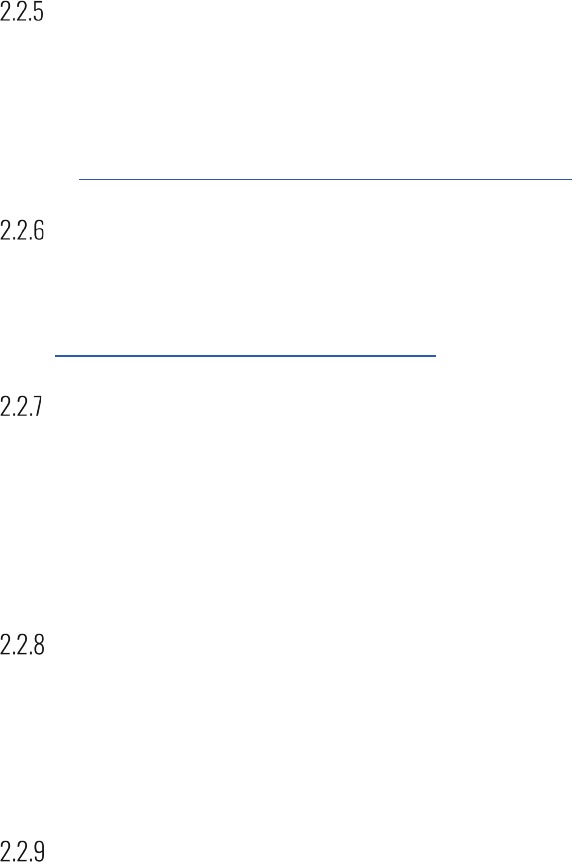
48
submitted. The three GIS data files must be uploaded in a singular zip file folder into Salesforce
with the following format: ApplicationNumber_Parcel.shp/kmz,
ApplicationNumber_Fence.shp/kmz, and ApplicationNumber_Footprint.shp/kmz. The zip file
folder must be labeled with the application number.
Required Documents If Accessing Affordable Solar Residential Incentive
For residential projects applying for the additional Affordable Solar incentive, the following
document must be submitted in the portal with the project application:
Income eligibility letter (application available at
https://nyserda.seamlessdocs.com/f/Income_Eligibility
Required Documents If Using Multifamily Affordable Housing Incentive
For projects applying for the additional incentive for Multifamily Affordable Housing Incentive,
the contractor or builder must provide proof the site is located at an affordable housing property.
Go to nyserda.ny.gov/solar-contractor-resources f
or list of acceptable eligibility documents.
Required Documents If Using Brownfield/Landfill Incentive
The brownfield/landfill added incentive must be identified and documentation establishing that the
system is eligible as identified in 1.4.8.3 Brownfield/Landfill Solar Incentive, must be provided at time of
application. Examples of eligibility documentation include a NYSDEC Brownfield Cleanup Agreement, a
written approval from NYSDEC for the site allowing ground mounted solar electric systems, or a NYSDEC
mining permit allowing ground mounted solar electric systems.
Required Documents If Using Floating Solar Incentive
The floating solar added incentive must be identified at time of application. For projects applying for the
floating solar incentive, the contractor or builder must include structure details, inclusive of the floating
structure and anchoring system, on the site map. Additional non-ministerial permit approvals should be
uploaded as part of the proof of planning and zoning approvals.
Required Documents If Using Solar Plus Energy Storage Incentive
2.2.9.1
Residential Solar Plus Energy Storage Projects
For projects applying for the Solar Plus Energy Storage residential incentive, the contractor or builder
must provide the following:
Energy storage system/product specification sheet (technology type, supplier, power
and energy (duration) rating)

49
Energy storage UL safety certifications (may be provided as a link to the certifying
lab’s listings. See the Technical Requirements section for specific requirements).
Energy storage system warranty (see Technical Requirements section for
minimum requirements).
Residential Solar Plus Storage Customer Acknowledgement Form agreeing to enrollment
of PSEG Long Island’s Dynamic Load Management (DLM) Program or other qualifying residential
storage DLM Program offerings, future offerings included available at nyserda.ny.gov/solar-
contractor-resources
The storage manufacturer commissioning approval documentation must be available upon request.
Documents Not Required with Application: Must be Available Upon Request
The following additional documents must be on file with the contractor. They may be requested by
NYSERDA, but do not need to be submitted with the project application to achieve submitted status.
Customer Agreement
The customer agreement is an important document outlining the direct relationship between
the contractor and the customer. As a condition of participation in the program, contractors
must abide by the terms and conditions in the participation agreement. All customer
agreements must also meet the requirements of the Uniform Business Practices for Distributed
Energy Resource Suppliers, available at
https://dps.ny.gov/distributed-en
ergy-resource-der-
regulation-and-oversight. The customer agreement may be in the form of a purchase
agreement or a lease/power purchase agreement. This does not apply to CDG projects.
1. A
ll customer agreements must be signed by both parties and include the following:
o Installation location: town, street, and lot or building number.
o Installation schedule: realistic installation and interconnection schedule taking
into account timeline requirements of NYSERDA and utility review requirements.
o System description: description of the solar electric system and if applicable, the storage system
being purchased and an outline of system specifications, the make and model of major system
components, identification and location of easy-to-read meter, references to UL listing, etc.
o Estimate of annual energy output: in kilowatt-hours and summarizing the results
of the system loss analysis.
o Energy Storage: Estimate of the minimum number of hours a fully charge energy storage system
could power and the circuits it could power, if applicable.
o Applicable incentives: customer agreement must reflect the entire amount of the anticipated
NYSERDA incentive and incentives and warranties must pass to
the customer.
o Explanation and estimate of additional customer-incurred costs: for development; installation;
operations and maintenance; commissioning of the system(s) and a payment schedule, if
applicable.
o Assignment of responsibilities: for scheduling or obtaining and paying for permits, inspections,
or other regulatory requirements.
50
o Addendum to customer agreement: completed and signed by both the customer and the
contractor.
Electronic signatures may be obtained through NYSERDA’s DocuSign account, which is
available in the portal. If a contractor prefers to use their own electronic signature account,
the tool must be NYSERDA approved and include a signature verification report. Approved
electronic signature tools include DocuSign, CudaSign, EchoSign, Adobe, and Seamless Doc.
Under no circumstances is a contractor or builder permitted to sign on behalf of the
customer.
2. If the customer agreement is for the purchase of the system, the agreement must also include
the following:
o Total system and itemized costs: for example cost of modules; cost of inverters; cost of storage
system, if any; balance of system (wires, racking, etc.); and labor and overhead (labor,
permitting, etc.), roof replacement/repair, if any; service panel upgrades, if any; and any other
significant project components.
o System warranty (see System Technical Requirements section).
3. If the customer agreement consists of a lease or power purchase agreement (PPA), it must
include all items listed under “1,” and the following:
o Total agreement cost and applicable incentives: lease or PPA must reflect the entire amount of
the approved NYSERDA incentive.
o Production warranty (see the System Technical Requirements section).
o Other terms: such as the party (customer or contractor) responsible for costs related to
movement and reinstallation of the system or parts and the terms under which those actions will
be taken, as well as any insurance coverage related to
the system.
o Escalation rates or factor for a lease or PPA: clearly described.
Utility Bill
For project applications, a copy of the utility bill must be available upon request. For new
construction residential projects, anticipated electric usage is required and detailed calculations
must be submitted for review. For projects in NYPA or a municipal utility, a copy of the utility bill
is required. Bills are not required for Community Solar Projects.
Permits
For residential and nonresidential projects, the contractor or builder must have applied for all
necessary permits, approvals, and certificates, to the appropriate agencies or municipalities for
construction of the solar electric project before submitting the application to the program.
While submission of required permits is not necessary with the project application submission,
the contractor or builder must produce all documents immediately upon NYSERDA’s request.
The building permit must be submitted with the final project invoice for all projects.
Nonresidential and commercial/industrial projects must also include the electrical inspection
certificate with final project invoice or commercial operation payment request.
51
All permits must clearly reference installation of the approved solar electric system, and storage
system, if applicable, at the customer site. If permits are not needed for installation, a signed
letter from the town code officer, or Authority Having Jurisdiction (AHJ) must be submitted
stating no building permit is required.
Energy Assessment
• Residential Clipboard Energy Efficiency Assessment
For residential project applications, a clipboard energy efficiency assessment must be
performed. A clipboard assessment consists of two components: an interview of the
homeowners to determine energy-use habits and age of the home, and a home
inspection to identify energy-saving opportunities. Certification an assessment has been
completed must be indicated on the project application at time of submission.
The inspection component of the assessment should take no more than 60 minutes and
includes:
o Assessment of the hard-wired lighting systems and free-standing light fixtures.
o Appliance ages and whether they are ENERGY STAR® certified.
o Presence of advanced power strips.
o Existence of “vampire loads” related to consumer electronics and battery chargers.
o Use of programmable thermostats or timers for air conditioners.
o Age and condition of the doors and windows.
o Details on recent energy efficiency upgrades, such as insulation.
After the assessment, the results will be reviewed with the homeowner. A copy of the
report will be left with the homeowner along with a list of Home Performance
contractors and informational brochures detailing NYSERDA’s energy efficiency
programs.
Customers will not be required to implement energy efficiency upgrades as a
prerequisite to participating in the program.
• Nonresidential and Commercial/Industrial Energy Assessment
For all nonresidential and commercial/industrial projects, building owners are given
information on benchmarking tools, such as ENERGY STAR’s portfolio manager
benchmarking tool. If requested by the building owner, the contractor or builder will
help input utility bill information in the tool to calculate an energy- use index and, where
applicable, an ENERGY STAR score. Customers will not be required to benchmark or
implement energy efficiency upgrades as a program prerequisite. Energy assessment
completion must be indicated on the project application at time of submission.
Any CDG project is exempt from the energy assessment requirements.
Payee W9
All payees should register their entity through the Portal. For projects eligible for payment
assignments, the contractor or builder must provide a copy of the payee’s W9 upon request.
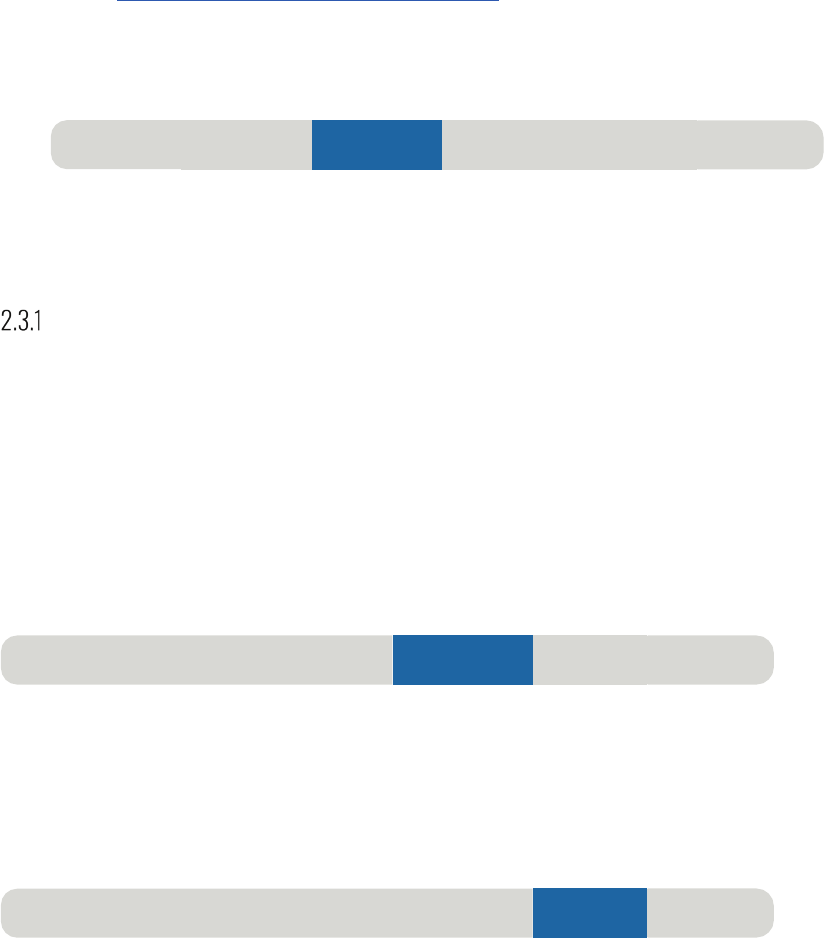
52
Construction Photos
The contractor or builder is required to take construction photos for each project. NYSERDA may
request construction photos for purposes of conducting a photo inspection at any time. See the
Photo Inspection section for additional information.
Visit nyserda.ny.gov/solar-contractor-resources for a photo documentation sample, which
contains a complete list of required photos.
2.3
Received Status
Unsubmitted
Completed Pending Approval Approved Received Submitted
The project application moves to received status once it has been received by the program.
At this time, the application will move into the queue for technical review.
Technical Review
Once the application has been received, the project may undergo a full technical review (design
review) to confirm the project has been designed appropriately and meets all program rules. For
a full description of all requirements, see the System Technical Requirements section.
If a project application has missing or inaccurate information or documents, the contractor
or builder will be asked to provide the correct information in the portal.
2.4
Pending Approval Status
Unsubmitted Received Submitted Completed Approved Pending Approval
When the project passes technical review, the application will automatically move to pending approval
status. In this status, the purchase order is finalized and funding for the application is reserved.
2.5
Approved Status
Completed
Approved
Unsubmitted Pending Approval Received Submitted
When the project application and system design have been officially approved by the program, the
contractor, builder, customer, and payee will receive notification to move forward with the installation
of the system. The contractor is responsible for providing the customer with a copy of the approval
letter, if no customer email address has been provided.
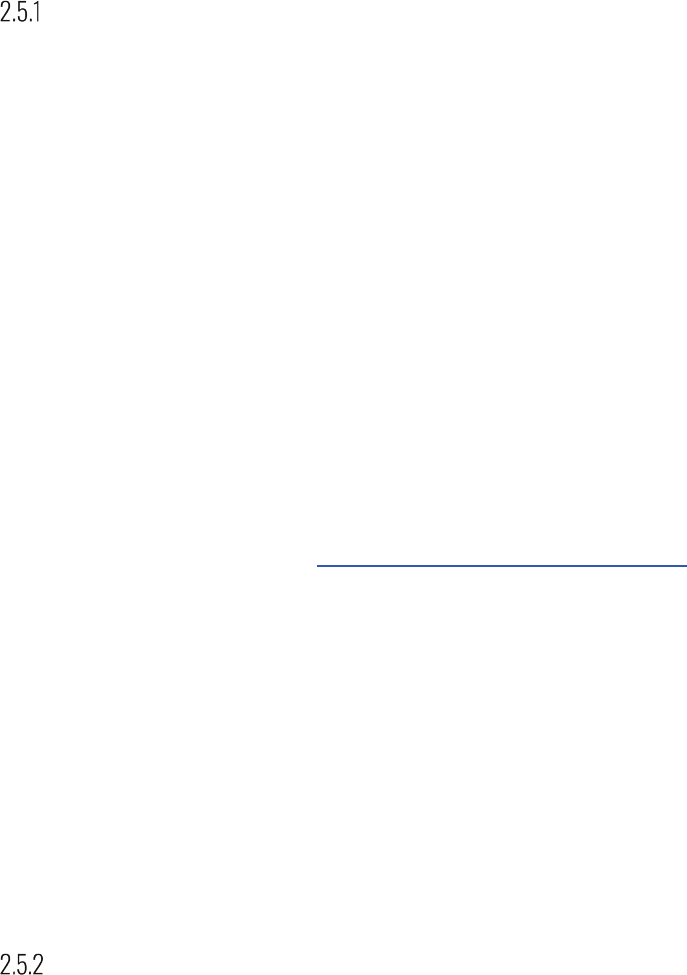
53
Project Timelines
All residential and nonresidential projects have 365 days from the project approval date (the date
project is marked approved in the portal) to complete the system installation and submit for final
project invoice approval.
Commercial/industrial projects have 912 days from the project approval date (the date project is
marked approved in the portal) to complete the system installation and submit for commercial
operation payment approval.
2.5.1.1
CESIR Milestone Deliverable
For projects requiring a CESIR, the contractor or builder must submit a CESIR milestone via the portal
no later than 170 calendar days from the date the utility confirmed payment of the 25% interconnection
payment. The contractor or builder must provide an executed Interconnection Agreement and email
confirmation from the utility that the remaining 75% interconnection payment has been made.
If a project has received an extension from the utility for the 75% interconnection payment date, the
Contractor must notify NYSERDA by providing the written confirmation from the utility. The Contractor
shall submit this documentation to [email protected]
s
o that the portal can be
updated to reflect the new date.
If a project is removed from the utility’s interconnection queue, the project must also be cancelled in
th
e MW Block program. If the project reapplies to the utility’s interconnection queue, that project
may reapply to the MW Block Program. Failure to request the project cancellation in the portal once
project is removed from the Utility queue may result in the new application being moved to
unsubmitted status. A new application can only be submitted after the original awarded project is
cancelled within the portal.
Projects that do not have completed CESIR Milestones may not be granted extensions until these are
completed. Projects that do not meet the specified deadlines and have no extension on file will be in
jeopardy of cancellation.
Actions in Approved Status
While in approved status, the contractor or builder may submit a project cancellation request,
project extension request, project modification request, or project invoice request.
2.5.2.1
Project Cancellation Requests
Requests to cancel a project must be done through the portal by submitting a request for cancellation.
Should a project wish to move forward after cancellation, the contractor or builder must submit a new
project application. In this case, the incentive level and all rules in effect at the time the new application
is submitted will apply.
54
2.5.2.2
Project Extension Requests
To request an extension, the contractor or builder must submit a project extension request in the
portal. Projects that exceed the completion deadline date will be in jeopardy of cancellation.
NYSERDA will approve extensions on a limited case-by-case basis. Project extensions will be granted
for legitimate and verifiable reasons which are beyond the control of the contractor, builder, or
customer. No other requests will be considered.
Residential Project Extension Requests
Project extensions may only be granted once for each residential project. If approved, the extension
will allow an extra 90 days to complete the project, bringing the total to 455 days.
Nonresidential Project Extension Requests
Project extensions may be granted twice, in 180-day increments each, for nonresidential projects.
If applicable, the contractor or builder must submit proof that an application has been filed at New
York State Education Department.
If approved, the first extension will allow an extra 180 days to complete the project, bringing the total
to 545 days from the original project approval date. A second extension may bring the total to 725 days
from the original project approval date.
Commercial/Industrial Project Extension Requests
Project extensions may be granted once for each commercial/industrial project. If approved, the
extension will allow an extra 180 days to complete the project, bringing the total to 1,092 days.
NYSERDA may consider granting of additional extensions in instances where the delay is associated with
circumstances outside of the Contractor’s control.
2.5.2.3
Project Modification Requests
A project modification request must state the original equipment quantity and catalog numbers,
the proposed equipment quantity and catalog numbers, changes in cost, and any changes in the
array configuration or wiring.
Customer signature is required for any project modification request that results in change in approved
funding amounts. Electronic signatures may be obtained through NYSERDA’s DocuSign account, which is
available in the portal. If a contractor or builder prefers to use their own electronic signature account,
the tool must be NYSERDA approved and a signature verification report must be provided. Approved
electronic signature tools include DocuSign, CudaSign, EchoSign, Adobe, and Seamless Doc. Under no
circumstances is a contractor or builder permitted to sign on behalf of the customer.
The contractor, builder, customer, and payee if applicable, will receive email approval for project
modification requests. The contractor is responsible for providing the customer with a copy of the

55
project modification approval letter, if no customer email address has been provided. All other changes
will be approved in the portal. Please check the portal before contacting NYSERDA regarding project
modification approvals.
Any system modifications or equipment changes must be submitted in the portal as a project
modification request and approved by NYSERDA before project invoice or commercial operation
payment is submitted. Failure to submit a change modification may result in revocation of the incentive
reservation or nonpayment of the incentive.
Residential Project Modifications
Residential project modification requests resulting in a larger system size are eligible to receive an
increased incentive. NYSERDA will review the request and calculate the new incentive or loan amount
(if applicable).
Residential projects funded at a previously higher incentive level have the option of accepting the
existing incentive award “as is” or recalculating the entire array at the current incentive level.
Residential Solar Plus Energy Storage Project Modifications
Existing project applications for solar systems that have already been submitted to NYSERDA must
cancel and reapply to add an energy storage system.
Residential Solar Plus Energy Storage projects that require an update to the storage equipment,
must complete the Storage Project Modification form available at
nyserda.ny.gov/solar-contractor-
resources, and submit to PVProcessi[email protected].gov. Changes to the solar system will require
a change modification request in the Portal.
Nonresidential Project Modifications
Nonresidential project modification requests resulting in an increase to system size will not earn an
additional incentive; however, projects that result in a smaller system size being built may result in a
smaller incentive.
Commercial/Industrial Project Modifications
Commercial/industrial project modification requests resulting in an increase to the system size will
not earn an additional incentive. Projects which are built smaller than proposed may see a reduction
in incentives. The contractor must provide a copy of the final as-built 3-line that is stamped by a NYS
licensed Professional Engineer (PE) to confirm equipment listed on the change modification matches
what was installed for either a system size increase or decrease. An updated Project Site Mapping
Data upload may also be requested to match the resulting system changes.
2.5.2.4
Project Invoice Requests – Incentive Payments
Residential Incentive Payments
The contractor receives the total project incentive in one installment. To request the incentive payment,
the project invoice must be submitted in the portal for approval.
56
Customer signature is only required on invoices for projects using GJGNY financing. Electronic signatures
may be obtained through NYSERDA’s DocuSign account, which is available in the portal. If a contractor
prefers to use their own electronic signature account, the tool must be NYSERDA approved and include
a signature verification report. Approved electronic signature tools include DocuSign, CudaSign,
EchoSign, Adobe, and Seamless Doc. Under no circumstances is a contractor or builder permitted
to sign on behalf of the customer.
To receive the incentive payment, the project invoice must include:
Signed project invoice – for projects using GJGNY financing
Utility interconnect permission to operate (PTO) letter
Building permit
Financing-Only Projects – Residential
The total GJGNY loan amount approved by NYSERDA will be paid on approval of the project invoice.
Customer signature is required on project invoices for financing only projects. Once approved,
NYSERDA’s loan originator is notified to release the loan.
To release the loan, the project invoice must include:
Signed project invoice
Utility interconnect permission to operate (PTO) letter
Building permit
Residential Solar Plus Energy Storage Incentive Payments
The contractor receives the total project incentive in one installment. To request the incentive payment,
the project invoice must be submitted in the portal for approval.
To receive the residential Solar Plus Energy Storage incentive payment, the project invoice
must include:
Utility interconnect permission to operate (PTO) letter(s) for the solar and the
storage system.
Building Permit
Proof of enrollment in PSEG Long Island’s Dynamic Load Management (DLM) Program
or other qualifying residential storage DLM Program offerings, future offerings included.
Nonresidential Incentive Payments
The contractor or payee receives the total project incentive in one installment. To request the
incentive payment, the project invoice must be submitted in the portal for approval.
To receive the incentive payment, the project invoice must include:
Utility interconnect permission to operate (PTO) letter
57
Building permit
Electrical Inspection Certificate
Commercial/Industrial Incentive Payments
The contractor or payee receives the project incentive in either one or three installments.
100% invoice when the system is installed, interconnected, and commercially operational or
50% invoice when the system is installed, interconnected, and commercially operational and
two 25% payments on each of the two consecutive anniversary dates. The anniversary date is
the date the commercial operation payment was approved.
Project invoice requests for commercial operation payment and any required deliverables must
be submitted through the NYSERDA Portal. For the Prevailing Wage Projects and Prevailing Wage Opt-In
Projects, Contractors must submit quarterly certifications by a New York State licensed Certified Public
Accountant during the project construction period when submitting an invoice.
For Contractors in Probation or Provisional participation status, commercial operation payments will be
made after the project has been inspected by NYSERDA and received a passing score. If the project does
not receive a passing inspection score, the commercial operation payment will be made after all
deficiencies found by the inspection are corrected and the corrections accepted by NYSERDA.
Contractors in full status who receive a failing inspection will be automatically placed in probation
status. Any future projects will require inspection prior to the release of payment, until the contractor
has been reinstated to full status. A Contractor will be reinstated to full status following three passing
inspections.
To receive the Commercial Operation Payment, the project invoice must include:
Utility interconnect permission to operate (PTO) letter
Building permit
Electrical Inspection Certificate with equipment listed
Negative Declaration for SEQRA, if applicable
As-built 3-line stamped by a NYS licensed Professional Engineer (PE) that includes:
• Quantity, conductor size, and insulation type of all energized (hot)
conductors, neutral/grounded conductors, and ground conductors.
• Type and characteristics of all raceways, conduit, and enclosures.
• The configuration of solar electric array into electrical strings.
• The voltage and amperage ratings of all combiner boxes, overcurrent protection devices,
switches, inverters, batteries, electrical panels, and other relevant equipment as applicable.
The rating of the main service panel and its main breaker.

58
• The quantity, manufacturer, and model of the inverter and solar electric modules.
• Energy storage system, if applicable.
• Customer name and address.
Confirmation that the site is reporting to the NYSERDA DER Integrated Data System. The site
name must match what is listed in the Portal, if there are multiple sites with the same address
the application number must also be listed
NYSAGM’s Determination Letter, if the project was subject to the AML305 Notice of Intent
Process.
For Prevailing Wage Projects and Prevailing Wage Opt-In Projects: Quarterly certifications
certified by a New York State licensed Certified Public Accountant during the project
construction period.
Inclusive Community Solar Adder: Payment Process, Funding Amount, and Subscriber Reporting
Projects must submit and have their milestone documentation approved prior to submitting invoices.
Milestone deliverables are submitted through the NYSERDA Portal. In some cases, NYSERDA may set up
a secure sharing site for sharing additional documentation. Milestone documentation cannot be shared
over email.
Go to nyserda.ny.gov/solar-contractor-resources to access the ICSA Milestone Submission and Invoicing
Guide for step-by-step instructions.
Milestone Deliverable Submission:
Milestone 1: The below documents must be submitted for the Milestone 1 Allocation. The
Milestone 1 Allocation must represent one of the following: the first, second, or third month of
credit allocation to the subscribers (e.g., if the project’s first month of operation is June 2024,
the contractor may choose to submit the documentation for June 2024, July 2024, or August
2024 as the Milestone 1 Allocation). This flexibility is provided to allow for subscriber
adjustments during the initial allocation and utility verification process.
• ICSA Subscriber Submission Form (see below)
• CDG Initial or Monthly Allocation Form for the Milestone 1 Allocation
• Documentation of utility acceptance of Initial or Monthly Allocation Form for the Milestone
1 Allocation
• Utility CDG Host Allocation Report for the initial allocation period or Milestone 1 Allocation
Milestone 2: The below documents must be for the Milestone 2 Allocation. The Milestone 2
allocation must represent the twelfth month after the Milestone 1 Allocation (e.g., if the
Milestone 1 Allocation is for August 2024, the Milestone 2 Allocation must represent August
2025).

59
• ICSA Subscriber Submission Form
• CDG Monthly Allocation Form for the Milestone 2 Allocation
• Documentation of utility acceptance of the form
• Utility CDG Host Allocation Report for the allocation period
Milestone 3: The below documents must be for the Milestone 3 Allocation. The Milestone 3
allocation must represent the twelfth month after the Milestone 2 Allocation (e.g., if the
Milestone 2 Allocation is for August 2025, the Milestone 3 Allocation must represent August
2026).
• ICSA Subscriber Submission Form
• CDG Monthly Allocation Form for the Milestone 3 Allocation
• Documentation of utility acceptance of the form
• Utility CDG Host Allocation Report for the allocation period
Contractors must use the ICSA Subscriber Form to submit a spreadsheet of all eligible subscribers,
including name, address, utility account number, allocation, discount rate, preferred contact
information, and method used by the Contractor to determine subscriber eligibility. The ICSA Subscriber
Form can be found at nyserda.ny.gov/solar-contractor-resources.
Contractors may submit for NYSERDA review and pre-approval a draft ICSA Subscriber Form prior to
invoicing in the NYSERDA Portal. The draft form may be submitted at any time, but NYSERDA will only
review a draft form one (1) time for each invoice. Additional reviews may be provided at NYSERDA’s
discretion.
Projects that include affordable housing properties and their residents as eligible subscribers must also
submit the documentation listed in the Affordable Housing Property Participation section at the time of
milestone submission.
Payment Process
Once the corresponding Milestone 1 submission receives NYSERDA approval, project invoice requests
for ICSA payments must be submitted through the NYSERDA Portal. Go to
nyserda.ny.gov/solar-
contractor-resources to see the ICSA Milestone Submission and Invoicing Guide for step-by-step
instructions. ICSA invoices must be submitted separately from the invoices for the associated NY-Sun
project.
The ICSA is paid in three installments:
First Payment: Upon project completion (defined as payment of the Commercial Operation
invoice for the associated NY-Sun project by NYSERDA) and acceptance by NYSERDA of the
required Milestone 1 documentation submitted by the Contractor, NYSERDA will calculate the
First Payment using the following formula:

60
First Payment = Actual capacity allocated to eligible subscribers (as documented in invoice) *
incentive rate * 50%
Second Payment: Upon the first anniversary of project completion and acceptance by NYSERDA
of the required Milestone 2 documentation submitted by the Contractor, NYSERDA will calculate
the Second Payment using the following formula:
Second Payment = Actual capacity allocated to eligible subscribers (as documented in invoice) *
incentive rate * 25%
Third Payment: Upon the second anniversary of project completion and acceptance by
NYSERDA of the required Milestone 3 documentation submitted by the Contractor, NYSERDA
will calculate the Third Payment using the following formula:
Third Payment = Actual capacity allocated to eligible subscribers (as documented in invoice) *
incentive rate * 25%
ICSA awards will not be increased if the system size of the corresponding NY-Sun project increases after
the ICSA application is submitted. No payment in any amount will be made on any invoice where the
minimum allocation requirement for eligible residential subscribers is not met (no less than 50%
allocated to eligible residential subscribers).
If the minimum requirements are not met at Commercial Operation, the ICSA award will be cancelled,
and the Contractor will not be able to invoice for future payments for that project.
ICSA Funding Amount
Each approved ICSA application will be contracted at the percentage range of a 40-60% Eligible
Subscriber Target (EST) of the associated NY-Sun project. The funding amount will be calculated based
on the total Watt-dc capacity of the associated NY-Sun project and the ICSA rate for the applicable
project type.
As an example, a 5 MW Upstate CDG project that has an approved ICSA application will receive a
contracted funding amount as determined below:
Example Calculation: 5,000,000 Wdc * 60% * $.10/W = $300,000
Funding Adjustments for High Performance
Projects that allocate more than 60% of project capacity to eligible subscribers at the time of
commercial operation are eligible for an increased ICSA award while the program funds remain
available. Additional funds will be added to the project’s contract at the ICSA rate for the applicable
project type. If sufficient uncommitted program funds are not available at the time of commercial
operation, no adjustment will be made.

61
If a project demonstrates that eligible allocation greater than 60% but less than 80% has been
achieved at commercial operation, NYSERDA will increase the project’s overall award to the
equivalent of an 80% EST.
If a project demonstrates that eligible allocation greater than 80% has been achieved at
commercial operation, NYSERDA will increase the project’s overall award to the equivalent of a
100% EST.
Award increases for high performance will only be made at the commercial operation payment. Awards
will not be adjusted at the second or third (anniversary) payments.
Payment Scenario Examples
Payment of the contracted ICSA is based on actual allocation to eligible subscribers, as described above.
Below are common example scenarios and how NYSERDA would handle them.
Scenario A: A project allocates 40% to 60% of the project capacity to eligible subscribers. 50% of those
eligible subscribers are Eligible Residential Subscribers.
Contracted projects that are able to allocate between 40-60% of project capacity to eligible
subscribers will be paid based on the actual allocation to eligible subscribers.
As an example, a 5 MW Upstate CDG project has an approved ICSA application with a total
award of $300,000 (5,000,000 Wdc * 60% * $.10/W). At commercial operation, the project has
allocated 45% of the project capacity to eligible subscribers, and 50% of those eligible
subscribers are residential. For their first payment, they would receive:
Scenario A First Payment: 5,000,000 Wdc * 45% * $.10/W * 50% = $112,500
Scenario B: A project allocates more than 60% of the project capacity to eligible subscribers. 50% of those
subscribers are eligible residential subscribers.
Contracted projects that are able to allocate more than 60% of project capacity to eligible
subscribers are eligible to receive additional funds at the ICSA rate for the applicable project
type for that additional capacity, pending fund availability. NYSERDA will also increase the
project’s overall award to the next higher band of EST; the project will then be eligible to get up
to what that higher band is for the rest of the project. A project can only receive this award
increase if they achieve the higher allocation at commercial operation.
As an example, a 5 MW Upstate CDG project that has an approved ICSA application and signs up
70% of the project with eligible subscribers can be compensated for the additional 10% capacity
from the separate fund at the ICSA rate for the applicable project type.

62
Scenario B First Payment:
Awarded amount: 5,000,000 Wdc * 60% * $.10/W * 50% = $150,000
Additional Capacity from High Performance Fund: 5,000,000 Wdc * 10% * $.10/W
*50%= $25,000
Total = $175,000
In this example, the project’s EST will go from 40-60% to 60-80% because 70% of the project is filled with
Eligible Subscribers. The award amount would be adjusted in the NYSERDA Portal and in the award
letter.
Original Award Amount:
5,000,000 Wdc * 60% * $.10/W = $300,000
Updated Award Amount:
5,000,000 Wdc * 80% * $.10/W = $400,000
The High Performance fund will be limited and will be allocated on a first-come, first-
serve basis at the time of the initial invoice submission. The additional capacity dollars
cannot be reserved prior to the invoice submission.
Scenario C: A project allocates more than 60% of the project capacity to eligible subscribers. 50% of those
subscribers are eligible residential subscribers. The is no more money in the High Performance Fund.
If a contracted project is able to allocate more than 60% of project capacity to eligible
subscribers, but there are no funds remaining in the High Performance Fund, NYSERDA will pay
the project based on the actual allocation to eligible subscribers, until the funds on the project
award are exhausted.
As an example, a 5 MW Upstate CDG project that has an approved ICSA application and signs up
70% of the project with eligible subscribers. The project would be paid actual allocation to
eligible subscribers until the funds on the project award are exhausted, as illustrated in the
below table.
Payment 1
Payment 2
Payment 3
% of Eligible
Subscribers
70% 70% 70%
Calculation 5,000,000 Wdc * 70% *
$.10/W * 50%
5,000,000 Wdc * 70%
* $.10/W * 25%
$300,000 - $262,500
Dollar Payout $175,000 $87,500 $37,500

63
Scenario D: A project allocates more than 40% of project capacity to eligible subscribers. Less than 50%
of those customers are Eligible Residential Subscribers.
If a project is unable to achieve a minimum residential subscriber portion of 50%, the ICSA
payment will be recalculated and paid based on the residential portion achieved.
As an example, a 5 MW Upstate CDG project allocated 60% of the project capacity to eligible
subscribers, but only 25% was allocated to eligible residential subscribers. The project would
only be paid for 50% of the project capacity, which represents the 25% residential capacity, and
25% of the non-residential capacity.
Example Calculation: 5,000,000 Wdc * 50% * $0.10/W = $250,000
Scenario E: A project allocates less than 40% of project capacity to eligible subscribers; or less than 20%
of project capacity to eligible residential subscribers.
If a project is unable to achieve the minimum eligible subscriber target of 40% it would be
deemed ineligible for the ICSA and would not be paid.
Subscriber Eligibility Documentation and Reporting
Contractors must maintain subscriber eligibility documentation and provide that documentation to
NYSERDA upon request. Documentation must be maintained in compliance with the NY-Sun Program
Participation Agreement. NYSERDA will conduct periodic audits of eligible subscriber documentation on
a sample of projects receiving the ICSA, and NYSERDA will periodically survey participating eligible
subscribers for the purpose of program evaluation.
Contractors must track the project’s retention of eligible subscribers for two additional years beyond the
third invoice payment (i.e., through the first month of the fifth year of operation/49
th
month of
operation); and must report retention information, documented by CDG Host Allocation Reports, to
NYSERDA upon request.
Long-Term Subscriber Make-up
Contractors are required to ensure that a project receiving the ICSA maintains the same or greater
percentage of ICSA-eligible customers as documented in the project’s Milestone 3 submittals, and the
same bill discount rate for those customers, for at least 25 years.
Contractors must submit documentation that the project still contains ICSA-eligible subscribers upon
request within 45 days of a request from NYSERDA. This documentation must take the form of the
milestone documentation required for invoicing (see above) for the most recent allocation cycle.
If NYSERDA determines that the same or greater percentage of subscribers and same bill discount was
not maintained, the project will have 180 days to remedy and resubmit documentation. (If the
discrepancy is less than 5%, the project will not be required to remedy). Projects that are unable to
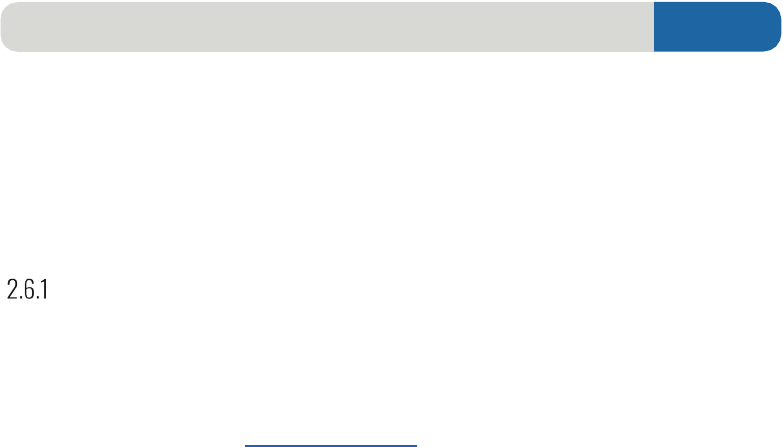
64
remedy will be required to return a portion of the ICSA funding paid by NYSERDA, calculated based on a
pro-rata share of a 25-year term over which the project was not an ICSA-eligible project.
Projects that choose to reconfigure so that they no longer qualify for the ICSA will require a return of the
ICSA incentive funding from Contractor or their successor, calculated based on a pro-rata share of a 25-
year term over which the project was not an ICSA-eligible project.
If a project is reconfigured so that it no longer qualifies as an ICSA project and fails to notify NYSERDA,
the project will be required to return their incentive funding using the calculation described above, and
may subject the contractor to disciplinary action, which may include contractor probation, suspension,
or termination from the NY-Sun program; suspension from submittal of new ICSA applications.
Misrepresentation of subscriber eligibility or any other submission of the application may result in the
project and/or contractor being removed from the ICSA program and the NY-Sun program. If NYSERDA
determines that a subscriber is not eligible, the contractor may not enforce any penalties on a
subscriber, including but not limited to removal from the project.
Expanded Solar for All Category B Payments
Projects that have received a Category B incentive award under RFP 5037: Expanded Solar for All must
submit the Commercial Operation Payment invoice for the associated NY-Sun award prior to submitting
an invoice for their Expanded Solar for All Category B incentive payment.
2.6
Completed Status
The project has achieved completed status once the system has been installed and interconnected
and NYSERDA approves the final payment for commercial operation.
Commercial/industrial projects may continue to receive anniversary payments while in completed
status.
Anniversary Payments – Commercial/Industrial
For each year of the two-year anniversary period, NYSERDA will generate and issue the anniversary
payment which will equal 25% of the incentive for any projects that elected to receive the 50/25/25
payment structure. Contractors will still be required to submit production data to the NYSERDA DER
Integrated Data System at der.nyserda.ny.gov
for two years from the date the project is marked
completed. The contractor and the payee are responsible for ensuring all production numbers and site
name are reported correctly to the NYSERDA DER Integrated Data System, however backfilling of data
will no longer be necessary.
Unsubmitted
Completed Submitted Received Pending Approval Approved
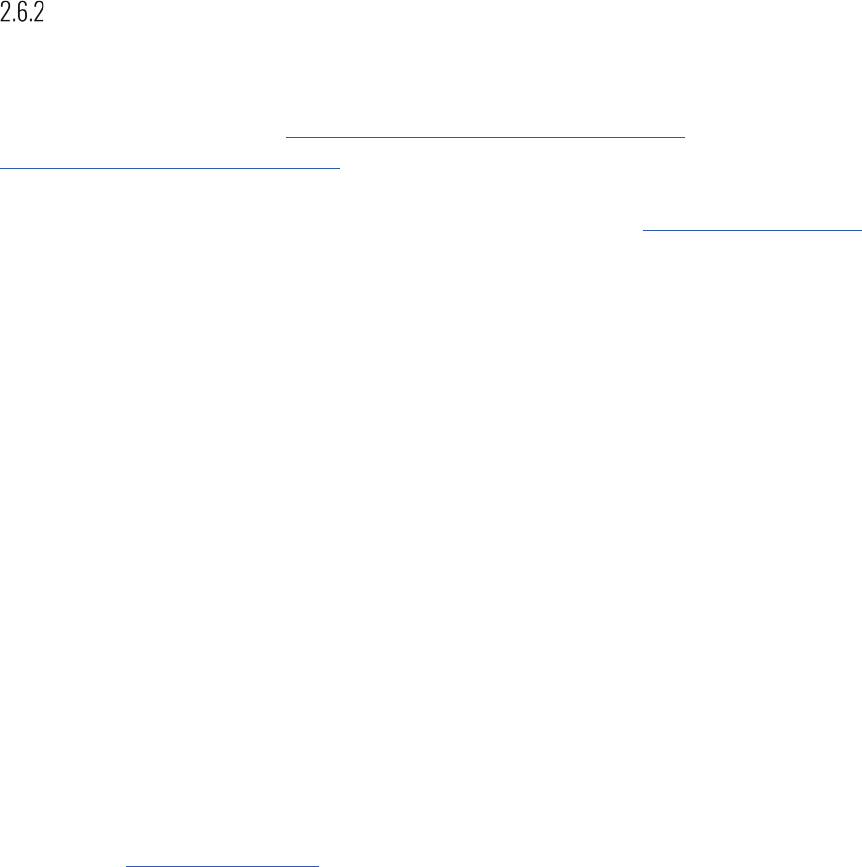
65
Anniversary payments shall be paid directly by NYSERDA after each of the two anniversary dates for
projects that elected to receive the 50/25/25 payment structure.
For projects that submitted their Commercial Operation invoice prior to June 23, 2023, payments will
continue to be made as originally awarded. Projects in the approved status after this date, have the
option to receive 100% of the incentive at Commercial Operation or elect to still receive 50% at
Commercial Operation and the two 25% anniversary payments.
Performance Payment Recoupment due to Non-Emergency Disconnection for Utility Work
Commercial/Industrial projects may be eligible for performance payment recoupment for production
loss due to project’s Non-Emergency Disconnection for Utility Work as defined in the NYS Standardized
Interconnection Requirements (https://www3.dps.ny.gov/w/pscweb.nsf/all/
dcf68efca391ad6085257687006f396b). The periods of down time between January 1, 2020, and June
23, 2023, will be the only periods of down time eligible for recoupment. The production loss will be
estimated by National Renewable Energy Laboratory (NREL)’s PVWatts (https://pvwatts.nrel.gov),
using
the project system component data that is listed on the project record, with a standardized loss factor
for all projects of 14.08% as utilized as the default value by NREL. The Non-Emergency Disconnection for
Utility Work must be corroborated by the production data being reported to NYSERDA’s DER Reporting
Site. The contractor will be responsible for obtaining confirmation from the utility for the time period of
the qualifying Non-Emergency Disconnection. NYSERDA will not accommodate requests less than
$3,000 per year.
Projects that have completed their performance periods prior to June 1, 2022, m
ay request recoupment
on their completed performance periods by submitting a request with the required documentation.
Contractors will have 90 days from the Version 15 effective date to request recoupment for these
projects.
Projects that have completed their performance periods after June 1, 2022, must notify their intent to
submit a request prior to the anniversary date. The request of recoupment must be submitted within
30 days after their anniversary date.
For Non-Emergency Disconnection for Utility Work downtime periods prior to June 1, 2022, if
confirmation is unable to be provided by the utility, an attestation by the Contractor may be
accepted. For all downtime periods after June 1, 2022, confirmation from the utility is required.
Additional resources and guidance how to submit are available in the Project Application Guidance
section in the Contractor Resources
.
In the event NYSERDA confirms that the downtime period for which Performance Payment Recoupment
was previously approved was a non-qualifying Disconnection of Utility Work, NYSERDA will require the
project to return the associated performance payment recoupment.

66
3 System Technical Requirements
3.1 Solar Modules
All solar electric modules must be certified as meeting all applicable standards of the Institute of
Electrical and Electronics Engineers (IEEE) and UL 1703 and detailed in the California Energy Commission
(CEC) eligible list found in the portal. The manufacturer is responsible for accurate updates to the list.
3.2 Inverters
All inverters must be certified as meeting all applicable standards of IEEE and UL and approved by the
IOU that the system will be interconnected to.
The CEC eligible list can be found in the portal. The manufacturer is responsible for accurate updates
to the list.
3.3 Solar Production Metering and Data Acquisition – Commercial/Industrial
The contractor must provide, install, and maintain an internet enabled electric meter that displays
instantaneous AC power and cumulative total AC energy production, and at a minimum, can record
cumulative total AC energy production of the solar electric system on an hourly and time-stamped
basis, store the hourly readings for at least seven days, and transmit recorded readings once per day to
a NYSERDA designated data agent via e-mail, FTP, HTTP or Modbus TCP/IP. The meter must meet the
American National Standards Institute (ANSI) C12 .20, be revenue grade with a +/- 0 .5% accuracy and
properly calibrated. The meter must also have battery backup to prevent the loss of data during power
outages or cloud data storage capability.
The contractor must provide, and maintain, an active internet connection to the meter for two years
from the date the commercial operation payment was approved. Data collected from the meter will be
available to the public at der.nyserda.ny.gov
or other similar websites specified by NYSERDA.
It is the contractor’s responsibility to ensure the meter and associated data storage, cloud data, battery,
and communications are responsibly maintained and in good working order, and that data is
successfully transmitted to the website during the two-year period.
Data transfer from the NYSERDA required meter to the NYSERDA website will be coordinated through
the designated data agent. Information on data transfer methods and registering your site can be found
by contacting NYSERDA designated data agent at https://frontierenergy.com/
or by calling
315-962-9030.

67
3.4 Solar Production Monitoring Equipment – Residential and Nonresidential
Each solar electric system must have the ability to record solar production in kilowatt-hours. The
contractor has the option of providing this information from a hardwired solar electric production
meter, online monitoring system, inverter display recorded production, or other approved method.
When a hardwired meter is provided, it will have the capability to display instantaneous AC power
and cumulative total AC energy production. Such meters must have a minimum accuracy of 5% and a
certificate of compliance from the manufacturer. Remanufactured utility-style meters are permitted
if they are certified as calibrated to the applicable ANSI standards for electricity metering. The meters
must include numerical digital displays, or analog (easy-read type) in watts or kilowatts for power and
kilowatt-hours or megawatt-hours for energy.
The listed metering and data acquisition and monitoring equipment requirements are separate from the
utility meters, which are used to determine customer credits on their bills. The utility meters should be
coordinated with the local utility as part of the interconnection process.
3.5 System Losses – Residential and Nonresidential
Project applications will indicate all potential output losses (actual kilowatt-hours generated after all
equipment losses are applied) associated with shading, system orientation, tilt angle, etc., and must
be analyzed and detailed by the contractor or builder for each system. Solar electric systems shaded by
trees or installed on a flat roof will have less than optimal outputs. All impacts on system output must
be quantified and considered during the review of the project application submitted by the contractor
or builder. The incentive level for a project will be reduced in proportion to output losses when losses
from factors, such as shading and orientation, exceed 30% of ideal kilowatt-hour output, as illustrated
in this table (incentive will continue to be proportionately reduced for losses greater than 40%).
Shading and
C
ombined loses from tilt, azimuth, and shading must be shown on the shading report as a Total Solar
Resources Fraction (TSRF) figure.
68
3.6 Grid Connection
To be eligible for incentives, all solar electric and energy storage systems must be grid-connected,
end-use applications. End-use means the system is connected on the customer’s side of the electric
meter, and electricity generated offsets the customer’s electricity purchases in accordance with current
net metering laws and utility guidelines. Projects may benefit from remote crediting of multiple utility
accounts or be structured as a Community Distributed Generation (CDG) project.
3.7 Approved System Design
Solar electric and energy storage systems must be installed in accordance with the design and system
components submitted in the application and approved by NYSERDA. However, NYSERDA’s approval
of the project application does not guarantee the system design, engineering, construction and/or
installation of the solar electric system is proper or in compliance with any particular laws (including
patent laws), regulations, codes, or industry standards.
Solar electric and energy storage systems not installed according to the NYSERDA-approved design
must have a project modification submission on file. The project modification must be approved before
the incentive payment or commercial payment is made. Upon inspection, if it is determined the system
is not installed as approved, the contractor may not be eligible for future incentive payments.
3.8 Interconnection
The contractor or builder is required to ensure all approved solar electric and energy storage systems
have an appropriate interconnection agreement that meets New York State standard interconnection
requirements. They must also ensure all approved systems are installed in compliance with that
interconnection agreement.
3.9 Other Electrical Components
All other electrical components of each solar electric system including, but not limited to, charge
controllers, energy storage, wiring, and metering equipment must be new equipment and certified
as meeting the requirements of all relevant national, New York State, local codes and standards, and
any additional requirements of the local Authority Having Jurisdiction (AHJ).
3.10 Structural Requirements
For roof mounted projects, the Contractor is required to provide structural/mounting details stamped
by a NYS licensed Professional Engineer (PE) or Registered Architect (RA) professional engineer (PE) or
registered architect (RA) as required by New York State law. A stamped engineer’s roof letter also meets
this requirement.

69
3.11 Compliance with Laws and Codes
All approved solar electric systems, system components, including storage components and
installations must comply with all manufacturers’ installation requirements, applicable laws,
regulations, codes, licensing, and permit requirements. This includes, but is not limited to, applicable
requirements of the NYSDEC or USEPA; the New York State Environmental Quality Review (SEQR); the
New York State Uniform Codes; the National Electric Code (NEC); New York State’s Standard
Interconnection Requirements; and all applicable State, city, town, local ordinances or permit
requirements, and any additional requirements of the local Authority Having Jurisdiction (AHJ).
Information on New York City fire codes and the NYC Fire Code Section 504 .4 can be found at:
Fire Code-Section FC504: https://www1.nyc.gov/site/fdny/codes/fire-code/fire-code.page
Application for a Variance to Fire Code FC504: https://www1.nyc.gov/site/fdny/business/all-
certifications/modification-variances.page
All approved solar electric systems, system components, including storage components and
installations must comply with all manufacturers’ installation requirements, applicable laws,
regulations, codes, licensing, and permit requirements. This includes, but is not limited to,
applicable requirements of the NYSDEC or USEPA; the New York State Environmental Quality
Review (SEQR); the New York State Uniform Codes; the National Electric Code (NEC); New York
State’s Standard Interconnection Requirements; and all applicable State, city, town, local
ordinances or permit requirements, and any additional requirements of the local Authority
Having Jurisdiction (AHJ).
3.12 System Warranty for Purchase Agreements
The contractor must provide the purchaser of the solar electric system with a full five-year transferable
warranty. The warranty must cover all components of the generating system and energy storage system,
if applicable against breakdown or degradation in electrical output of more than 10% from the original
rated electrical output. The warranty will cover the full costs, including labor, repair, and replacement
of defective components or systems. The contractor is responsible for providing warranty coverage in
a timely manner regardless of the level of support from the equipment manufacturer. Requests for
warranty services must be responded to within 72 hours and repairs completed within 30 days. The
contractor must also provide the customer with information on any additional or extended warranties
that may be applicable.
3.13 Production Warranty for PPA/Leases
The contractor will offer a production guarantee to the customer for the initial term of the agreement
(at minimum). This will provide the customer with compensation if the system produces less than the
guaranteed output as specified in the lease or PPA agreement. Guaranteed output may not allow
cumulative degradation in electrical output of more than 1% per year from the original rated electrical
output for the initial term of this agreement. Under no circumstance will customers be responsible for

70
any labor and repair or replacement costs of defective components or systems over the initial term of
the agreement. Should the customer sell the property at which this solar facility is located, the
production guarantee is fully transferable to a new lessee, consistent with the terms of the lease
or PPA agreement.
3.14 Energy Storage Systems
Equipment Eligibility for Solar Plus Energy Storage Projects
The energy storage system must be listed to specific UL or CAN standards listed below, be approved by
the utility that the system will be interconnected to meet the requirements of the local Authority Having
Jurisdiction, and must meet the following in addition to the applicable requirements detailed above.
3.14.1.1
Permanently Installed
NYSERDA requires the energy storage system to remain operational and permanently installed with the
NY-Sun solar project in New York State for the life of the system. Physical permanence is determined
by physical and electrical connections in accordance with industry practice for permanently installed
equipment and be secured to a permanent surface. Upon inspection, any indication of portability,
including but not limited to quick disconnects, unsecured equipment, wheels, or dolly, will deem the
system ineligible.
3.14.1.2
Energy Storage System Warranty
The storage equipment must consist of commercial products carrying at least a 10-year manufacturer
warranty. The warranty must cover the entire energy storage system including ancillary equipment
and power electronics. Experimental, beta, or prototype equipment is not eligible. The specific
terms of the warranty (such as number of cycles warranted) are between the manufacturer and
contractor/customer. Residential projects are required to provide the warranty at time of application.
3.14.1.3
Grid Connected
The energy storage system must be connected to the local electric utility’s distribution system and must
be operated primarily for shifting renewable energy or for load management while operating in parallel
with the utility grid. Energy storage systems may also be used for back-up, uninterruptible power supply
(UPS), resiliency, or power quality but this use case must be secondary.
3.14.1.4
Safety Certifications to UL or CAN Standards
All eligible energy storage systems must be certified for safety by a Nationally Recognized Testing
Laboratory (NRTL) as evidenced by listing to UL 9540 or CAN 9540 (Standard for Energy Storage
Systems and Equipment) with subcomponents meeting each of the following standards that are
applicable based on the storage type (chemical, thermal, mechanical): UL 1973 (Standard for Batteries

71
for Use in Stationary, Vehicle Auxiliary Power and Light Electric Rail Applications), UL 1642 (Standard
for Lithium Batteries), UL 1741 or UL 62109 (inverters and power converters) . These listings must be
received by the time that the system is entering commercial operation and before payment of the
NYSERDA incentive. In all cases energy storage systems must satisfy the requirements of the local
AHJ. A field evaluation may also be conducted by an NRTL to the applicable product safety standard(s).
3.14.1.5
Storage System Sizing
The maximum energy storage incentive payment a residential project may receive is 25kWh.
3.14.1.6
Inverter Requirements
All inverters must be certified as meeting all applicable standards of IEEE and UL and approved by
the electric distribution utility that the system will be interconnected within.
3.14.1.7
Round Trip Efficiency
All energy storage systems must be designed to maintain a minimum 70% round trip efficiency during
the system life. Round trip efficiency is the difference between kWh used to charge the system and
kWh discharged from the system, including any parasitic losses and all forms of usable energy. Refer to
the design procedures indicated in Pacific Northwest National Lab/Sandia National Lab’s Protocol for
Uniformly Measuring and Expressing the Performance of Energy Storage Systems (SAND 2016-3078 R).
Monitoring Requirements for Solar Plus Energy Storage Projects
Residential Solar Plus Energy Storage projects are not required to provide monitoring data, beyond
what is required for the solar system (see Solar Production Monitoring Equipment section for details).
At a minimum, the energy storage system must meet the requirements set forth in NYSERDA’s
Battery
Energy Storage System Guidebook, which adheres to the NYS Uniform Code. Please be aware that these
requirements may be greater than what the local AHJ approval may require.

72
4 Quality Assurance and Compliance
NYSERDA maintains the integrity of its program through an independent Standards and
Quality Assurance team, which manages the Quality Assurance (QA) system for the program.
The Quality Assurance Policies and Procedures Manuals provide details on the QA system and
is available at nyserda.ny.gov/solar-contractor-resources
.
The QA program has several components, including a review of qualifications and credentials,
paperwork audits, establishment of program standards, and comprehensive field and photo inspections.
QA photo and field inspections include verification of the contracted scope of work, accuracy of the site
analysis, comparison of installation to submitted design drawings, National Electric Code, International
Building Codes with New York State Uniform Code Supplement compliance, and the overall delivered
quality of the solar electric installation and if applicable, of the energy storage system. The NYSERDA
Standards and Quality Assurance team, or its representatives, may make a reasonable number of visits
to the customer site before, during, and after installation of a solar electric system to assess overall
compliance.
4.1 Inspection of Completed Projects
NYSERDA selects specific completed projects for QA inspections following a rational sampling protocol.
The protocol utilizes a strategic sampling of completed projects with rates primarily based on the
contractor’s and builder’s current program status and recent photo and field inspection scores.
The purpose of the QA inspection is to provide NYSERDA with an opportunity to evaluate the accuracy
of the site analysis and design paperwork and verify the system was installed according to all program
requirements. The QA inspection also includes selected health, safety, and performance items, and
specific compliance items per applicable code.
NYSERDA may select any completed project at any point in the future for a photo or field inspection
based on customer complaints, warranty-related issues, a review of the work done by the contractor or
builder under status review or program disciplinary action, or for circumstances that relate to public
safety or otherwise deemed by NYSERDA. At any time, Contractors will be responsible to make available
documentation concerning fire or safety incident, including Root Cause Analysis, upon NYSERDA’s
request. All contractors and builders are encouraged to perform in-house quality control of their
projects.
4.2 Participation Status
Provisional Status
Contractors and builders in provisional status meet entry level program requirements for credentials
and experience but have not met the minimum QA requirements as described to move to full status.

73
Project applications submitted by contractors or builders in provisional status will receive both an initial
review and technical review; and completed installations will be subject to increased QA oversight. The
guidelines of the provisional status are as follows:
Provisional contractors or builders will be listed on NYSERDA’s website and may be denoted
as such.
Provisional contractors may not submit more than 15 project applications total, until three
completed projects have received a passing QA inspection (photo or field).
Following the completion of the third project and the related QA inspections, NYSERDA will
conduct a formal review to evaluate a change in status. Evaluation for a change to full status
will be based on the quality and consistency of all submitted work that is fully compliant and
meets credentialing requirements.
Full Status
Contractors and builders who have met all program requirements for credentialing, experience, and
installation quality will be placed in full status. Existing contractors and builders who have previously
demonstrated consistent quality through the program will be placed in full status. The guidelines of
the full status are as follows:
Full contractors and builders will be listed on NYSERDA’s website and may be denoted as such.
Full contractors and builders must meet program standards for timely responses to NYSERDA
communications and QA field inspection and corrective action requests.
Full builders are required to have an appropriately credentialed individual on staff (the
Builder Qualifications section). Failure to satisfy this requirement and present appropriate
documentation will result in an automatic change to probation status.
Probation Status
Probation status is reserved for contractors and builders that have failed to meet the requirements
of the program. Probation is prescriptive in nature, in that NYSERDA defines specific results to be
achieved in a designated timeframe. During probation, a contractor or builder can still submit project
applications, but is restricted from signing a relationship agreement with another participating
contractor or builder.

74
A contractor or builder may be placed in probation status for any of the following reasons:
Violation of program rules or ethical standards or NYSERDA’s Contractor Code of Conduct.
Commercial/industrial contractors who receive a failing inspection for a commercial/industrial
project will be placed in probation status. Any future projects will require inspection prior to
the release of payment, until the contractor has been reinstated to full status. A Contractor will
be reinstated to full status following three passing inspections.
Failure to consistently deliver completed projects that pass the QA field or photo
inspection standard.
Failure to take effective corrective actions on a critical or major deficiency or a
repeated incidental or minor deficiency in work quality or performance.
Corrective action requests that have not been responded to or remain unresolved for
more than 30 days.
A lapse in required credentials.
The probation period will not be less than 30 days. While in probation status, the contractor
or builder:
Will remain on the NYSERDA website.
May continue to submit new project applications, subject to restrictions based on the
reason for the probation status.
Will be subject to higher QA inspection levels as outlined in the program manual.
Must remediate all issues related to probation, as directed by NYSERDA.
Must submit, in writing, an agreed-upon action plan designed to ensure future violations
are avoided.
Must demonstrate successful results through a specified number of completed projects.
Upon satisfactory completion of the action plan and all remediation and review of probation period
QA results, NYSERDA will determine whether to return the contractor or builder to full status,
continue the probation period, or move to suspended or terminated status.
Suspended Status
Contractors and builders who have failed to adequately respond to terms of the probation status action
plan, or who have committed serious violations of program rules, will be placed in suspended status.
A contractor or builder may be suspended if they:
Fail to adequately fulfill the terms of the probation action plan.
Are placed on probation for a second time in 12 months.

75
Are under investigation for or have been determined to have engaged in practices that
have put the public or program at risk, including violations of the UBP-DERs and/or other
consumer protection regulations or statutes, and regardless of whether such practices were
associated with projects receiving NY-Sun incentives.
Have one or more projects not completed by the deadline and no project extension is on file.
Have outstanding and unresolved requests for return of incentive to NYSERDA due to failure
to meet program requirements.
Fail to provide backup documents when requested.
Have submitted documentation with falsification of any required items, including but not
limited to, permits, approvals, and customer signatures.
Have a lapse in required credentials while on probation status.
Fail to consistently deliver completed projects that pass the QA field or photo inspection
standard.
While in suspended status, the contractor or builder:
Will be removed from the NYSERDA website.
Will not be allowed to submit new project applications to the program.
Must complete any work that is in progress when the partner is placed in suspended status.
May not represent themselves as a participating contractor or builder, except in the execution
of remedial action.
May be directed by NYSERDA to remediate issues related to the suspension.
May be required to submit, in writing, an agreed-upon action plan designed to ensure future
violations are avoided.
A contractor may not submit project applications using a builder in suspended status. Likewise, a builder
may not submit project applications or install for a contractor in suspended status.
Suspended contractors and builders will either progress to probation or full status upon satisfactory
completion of the specified remedial activities and resolution of issues related to the suspension or will
be terminated from program participation. Nothing in this status relieves the contractor or builder of
the responsibility to fulfill any outstanding obligations to the program or program customers as directed
by NYSERDA.
Terminated Status
Contractors and builders who have failed to respond to prescriptive action plans and disciplinary
measures, or who have committed serious violations of the program rules may be terminated.

76
A contractor or builder may be terminated from the program if they:
Have had a suspended status for more than 30 days and have been unresponsive or failed
to adequately fulfill the terms of their suspension action plan.
Have had their credentials lapse while suspended.
Submit falsified documents or unauthorized signatures to the program.
Commit illegal actions while participating in the program.
Are convicted or have a principal who is convicted of a criminal charge that casts the
program in a negative light or calls their integrity or workmanship into question.
Are in gross violation of program installation standards.
Repeatedly invoice for uninstalled projects.
Fail to meet the terms of the provisional period.
A contractor will not be allowed to submit project applications using a builder in terminated status.
Likewise, a builder will not be allowed to submit project applications or install for a contractor in
terminated status. Neither can represent themselves as a participating contractor or builder except in
the execution of remedial action.
Contractors and builders in terminated status are prohibited from participation in this or other NYSERDA
programs. Customers with incomplete projects will be notified of the termination and may be offered
such remedies as NYSERDA deems appropriate. NYSERDA may notify the New York State Attorney
General, the New York State Department of Labor, the Better Business Bureau, or others, of the decision
to terminate the contractor or builder from the program. Further, the officers and owners of the
terminated contractor or builder are prohibited from being or becoming officers or owners of any other
program partner. Nothing in this process relieves the contractor or builder of the responsibility to fulfill
any remaining obligation to the program or its customers.
Inactive Status
Contractors and builders may be declared inactive if they have not had an approved project in the
program over a 24-month period of time. They will be removed from the website, no longer receive
email notifications, nor be eligible for incentives or financing options. Should they wish to participate
in the future, they may reapply under the rules in place at that time.
Status Review Process
NYSERDA continually reviews all contractor’s and builder’s performance in the program to determine
if a change in status is necessary.
77
NYSERDA administers change in program status in the following ways:
Request a meeting with the contractor or builder.
Issue a notice of program violation or compliance resulting in contractor or builder
status change.
Reserves the right to take immediate action on program violation when warranted.
Contractor or builder has 5 business days to dispute the program violation notification.

SUN-IP-progman-upstli-gm-1-v18 4/24
NY-Sun, a dynamic public-private partnership, will drive growth in the solar industry and make
solar technology more aordable for all New Yorkers. NY-Sun brings together and expands
existing programs administered by the New York State Energy Research and Development
Authority (NYSERDA), Long Island Power Authority (LIPA), PSEG Long Island, and the New York
Power Authority (NYPA), to ensure a coordinated, well-supported solar energy expansion plan
and a transition to a sustainable, self-sucient solar industry.
NYSERDA, a public benefit corporation, oers objective information and analysis, innovative
programs, technical expertise, and support to help New Yorkers increase energy eciency, save
money, use renewable energy, and reduce reliance on fossil fuels. NYSERDA professionals
work to protect the environment and create clean-energy jobs. NYSERDA has been developing
partnerships to advance innovative energy solutions in New York State since 1975.
To learn more about NYSERDA’s programs and funding opportunities, visit nyserda.ny.gov
or follow us on X, Facebook, YouTube, or Instagram.
New York State
Energy Research and
Development Authority
17 Columbia Circle
Albany, NY 12203-6399
toll free: 866-NYSERDA
local: 518-862-1090
fax: 518-862-1091
nyserda.ny.gov
